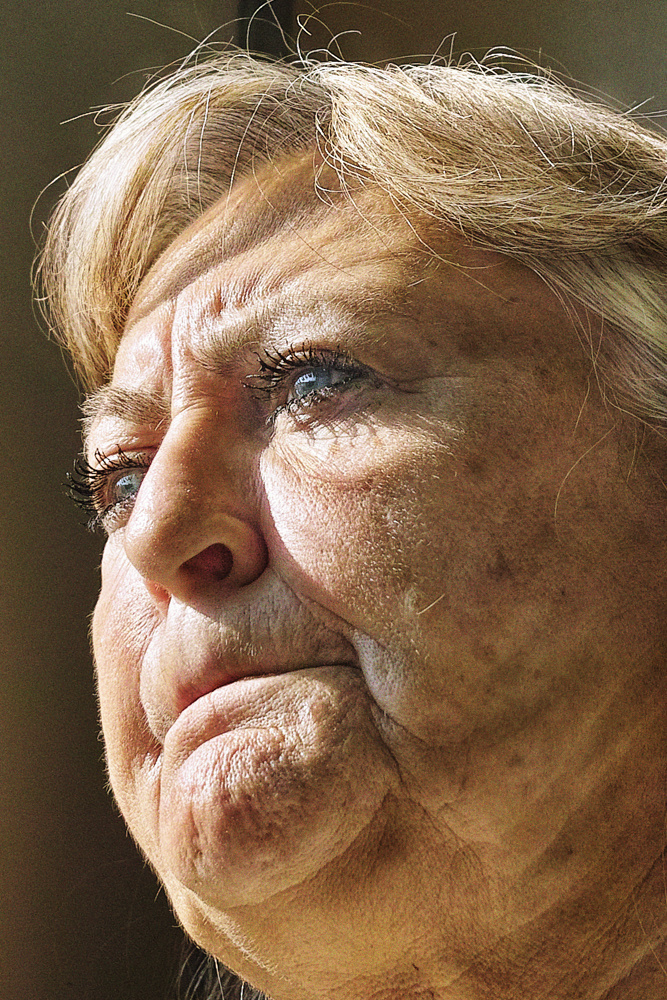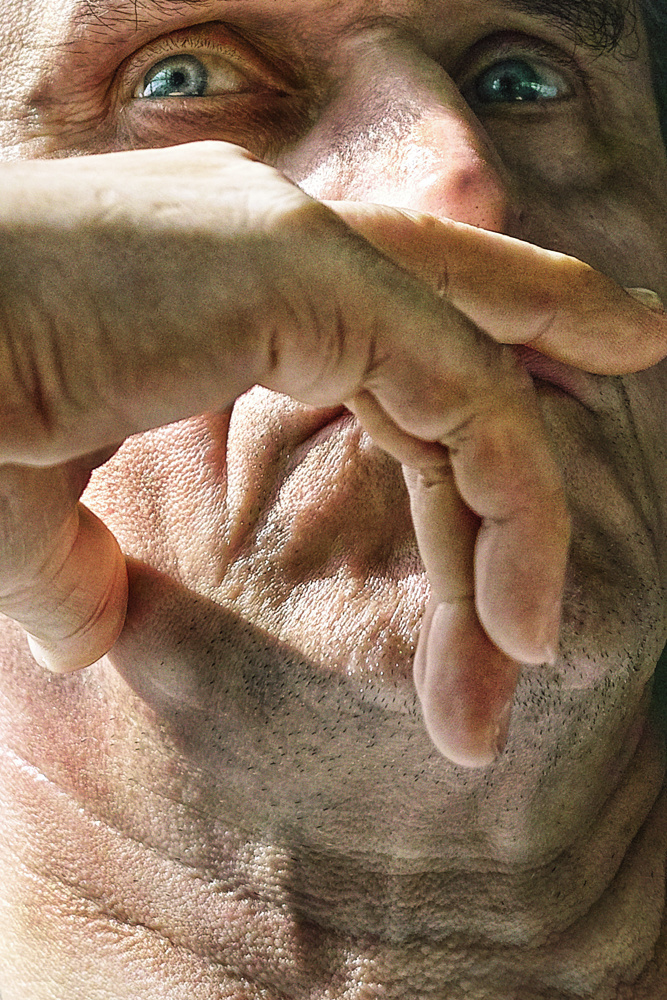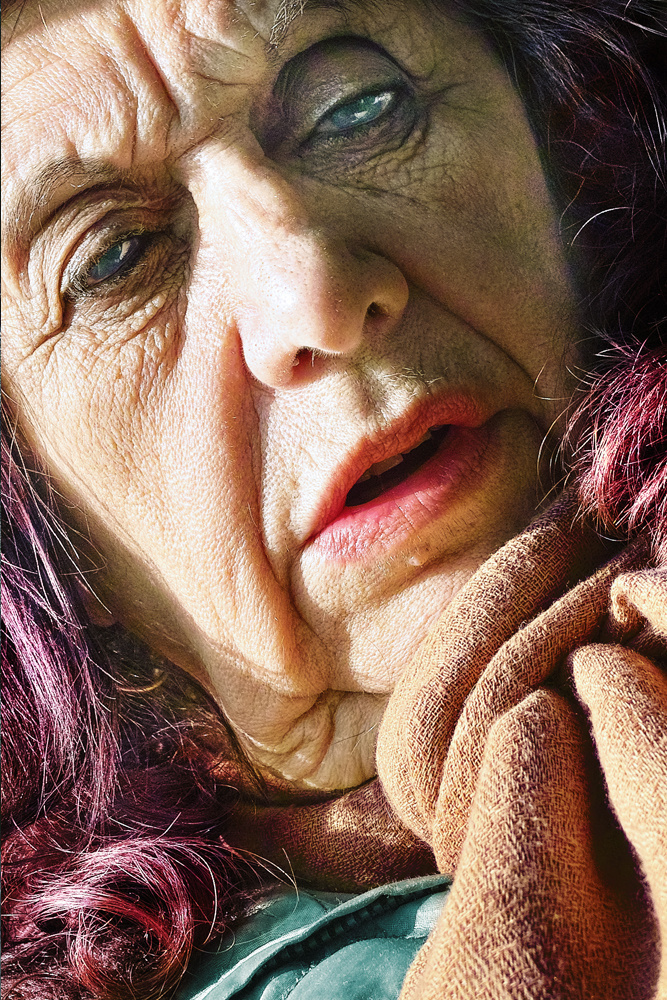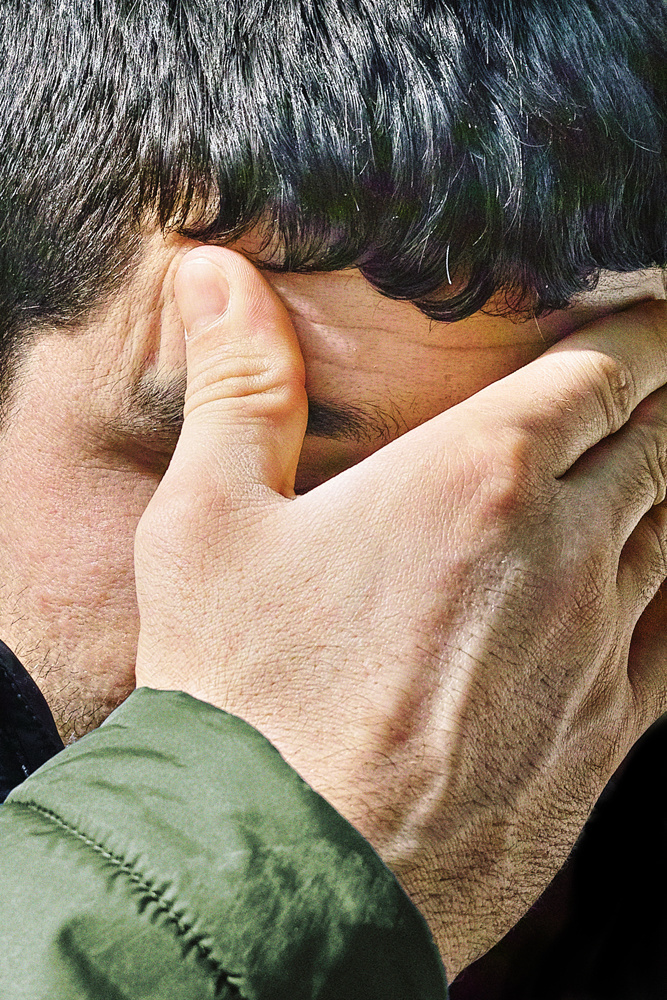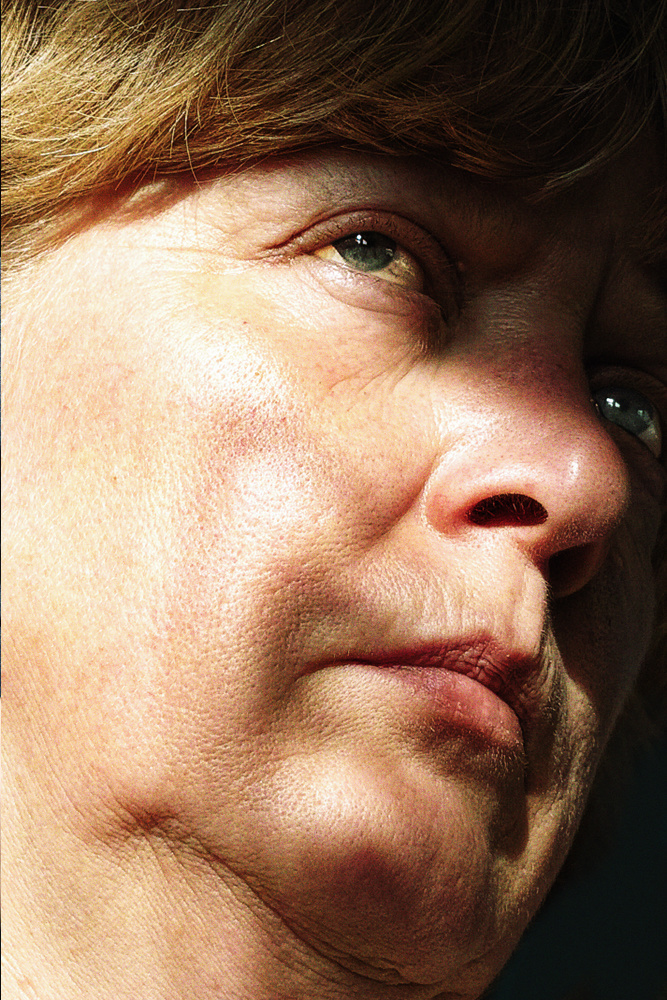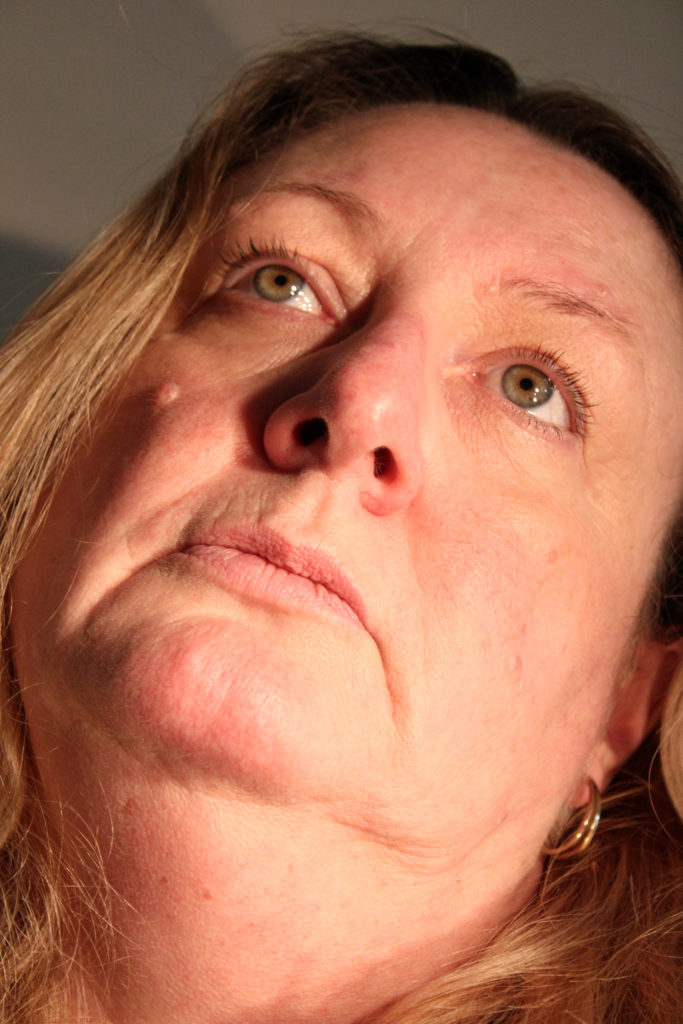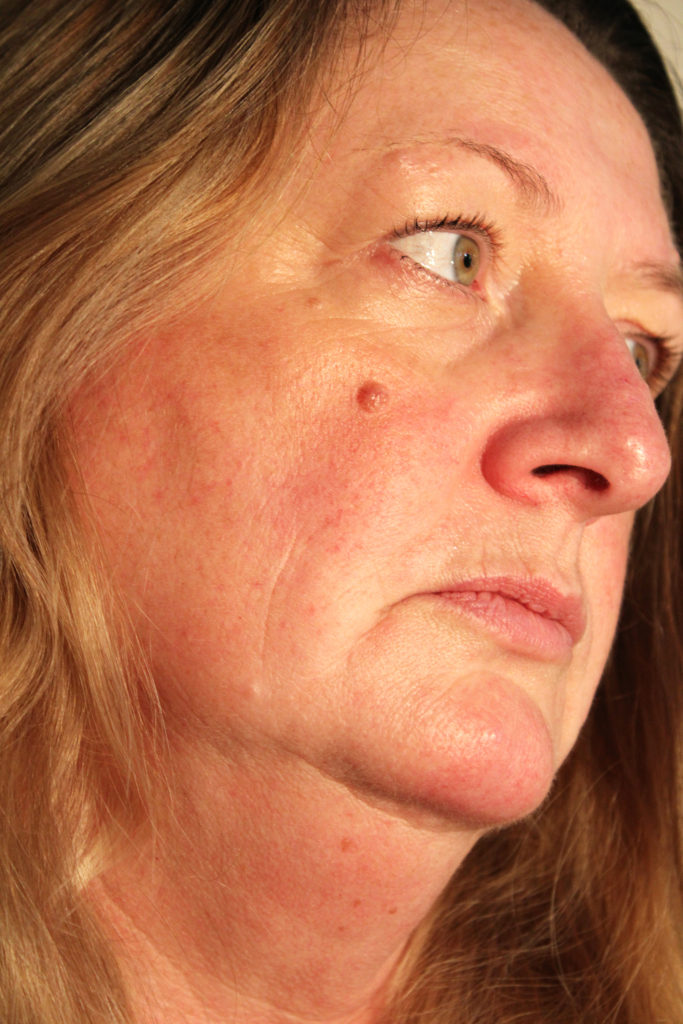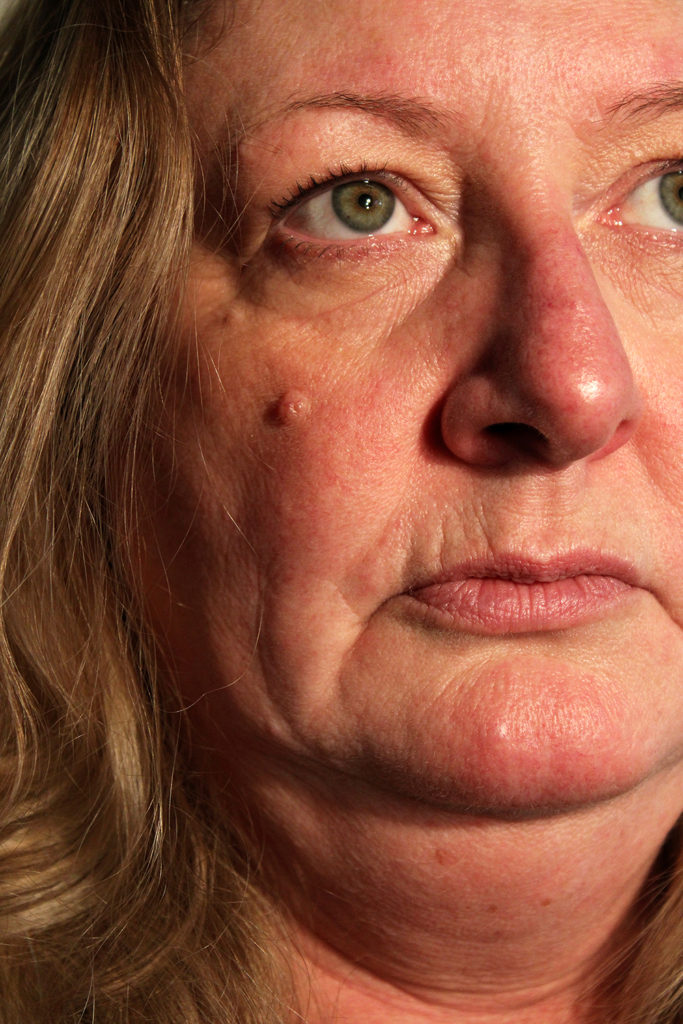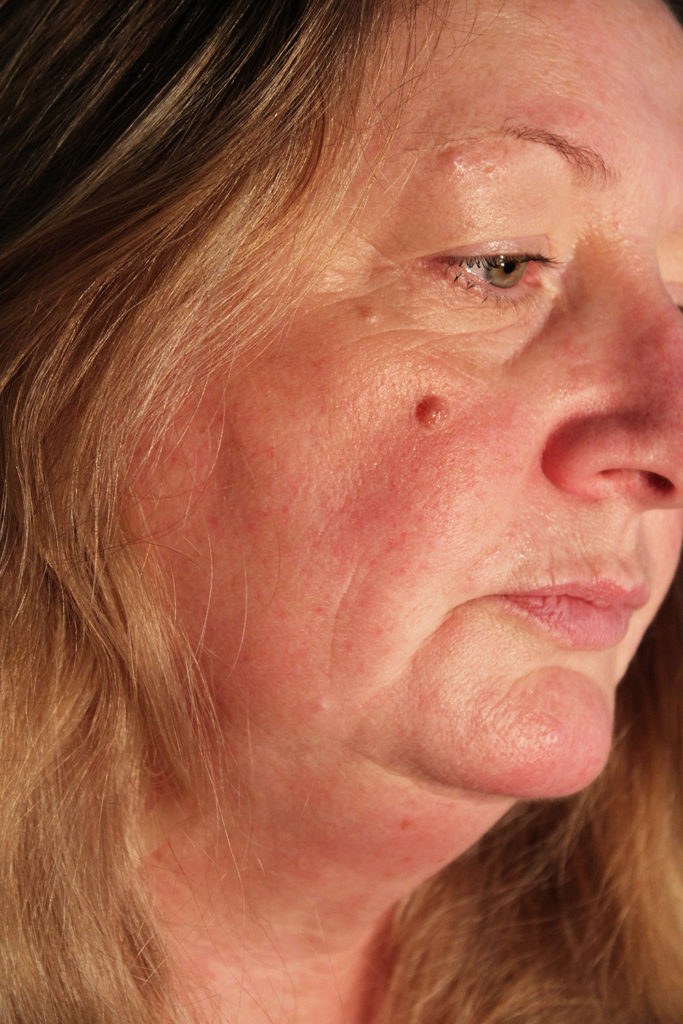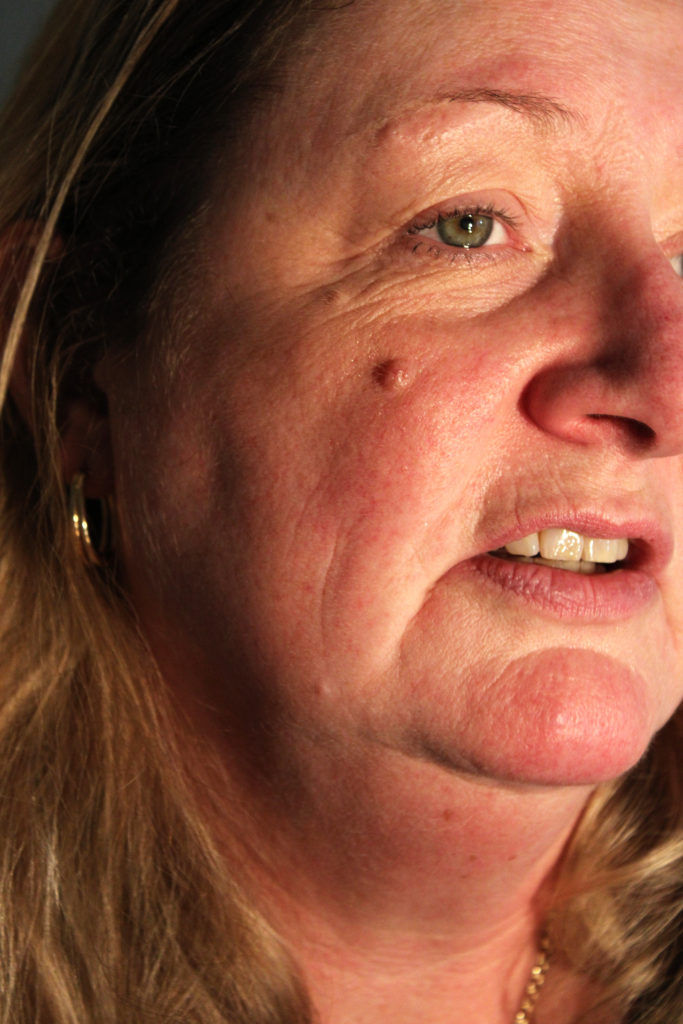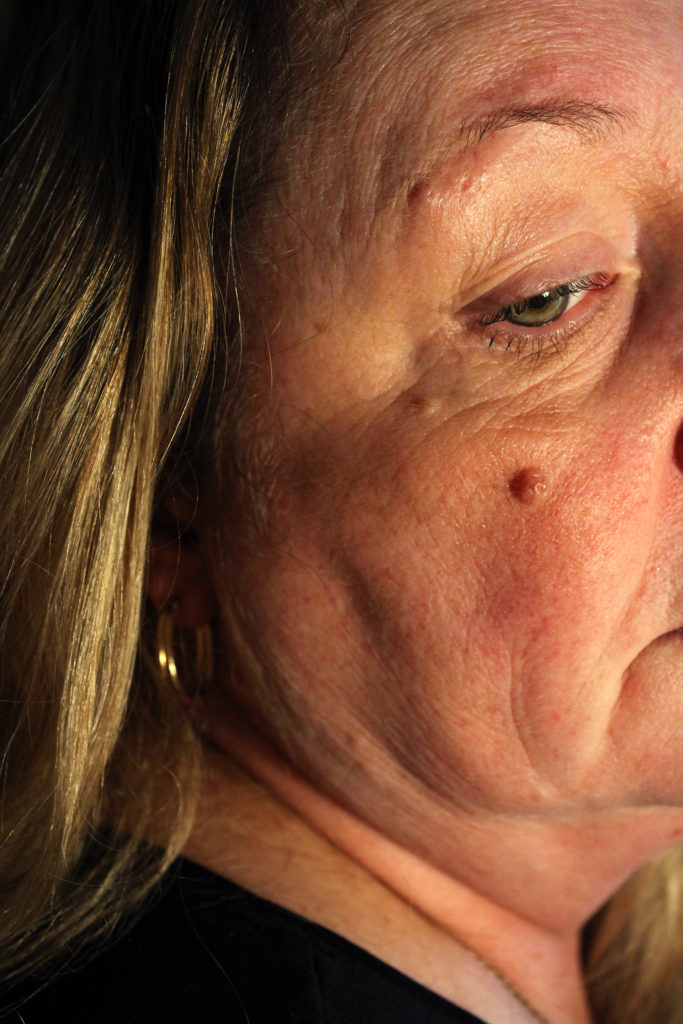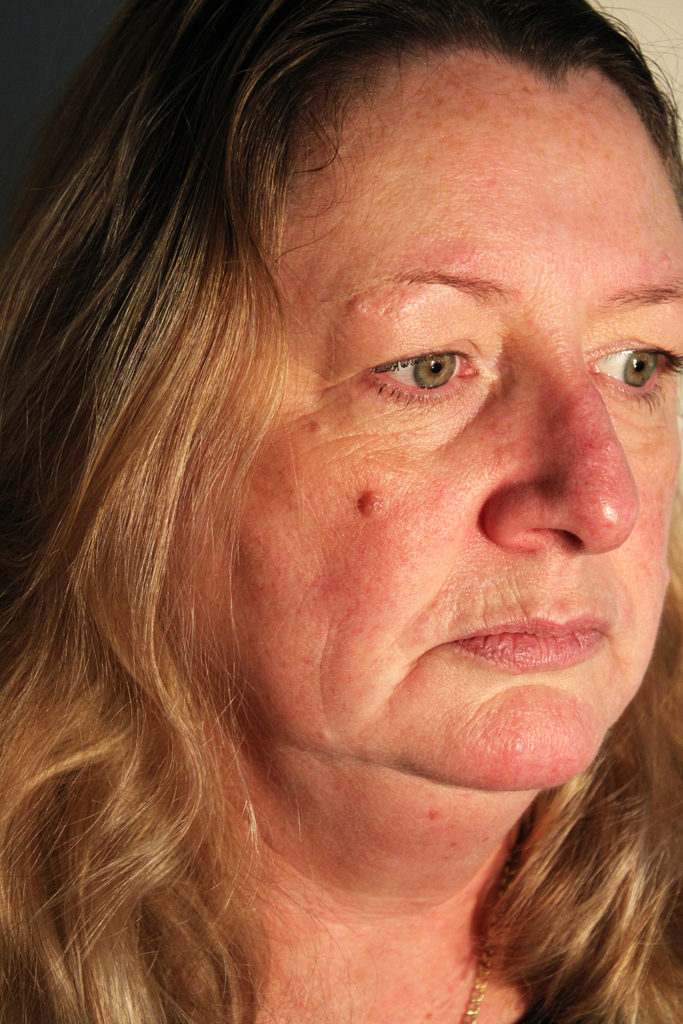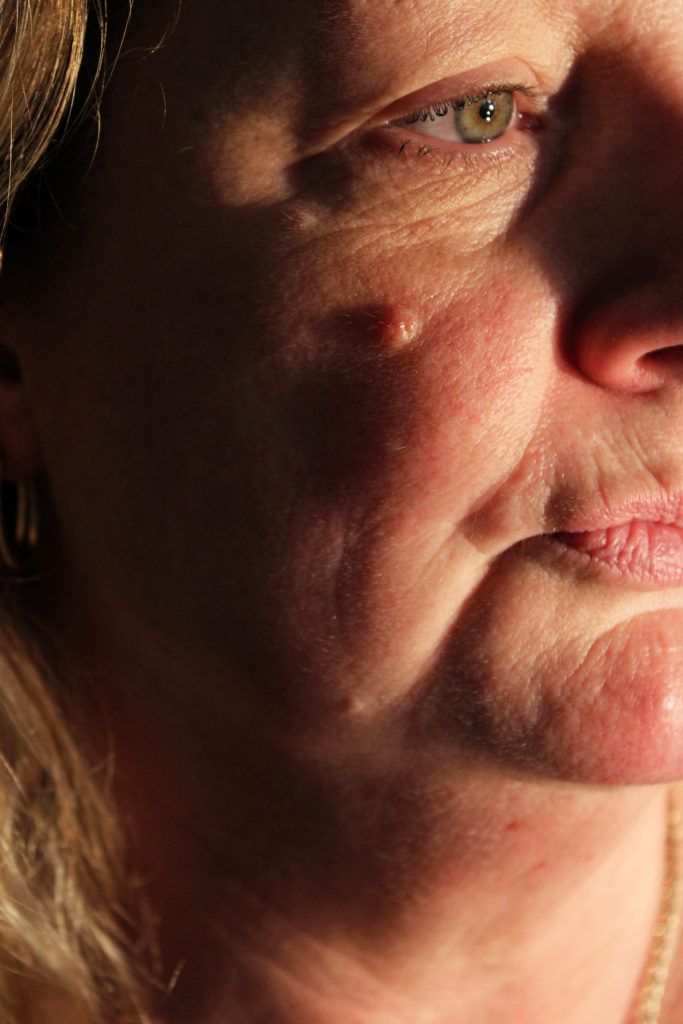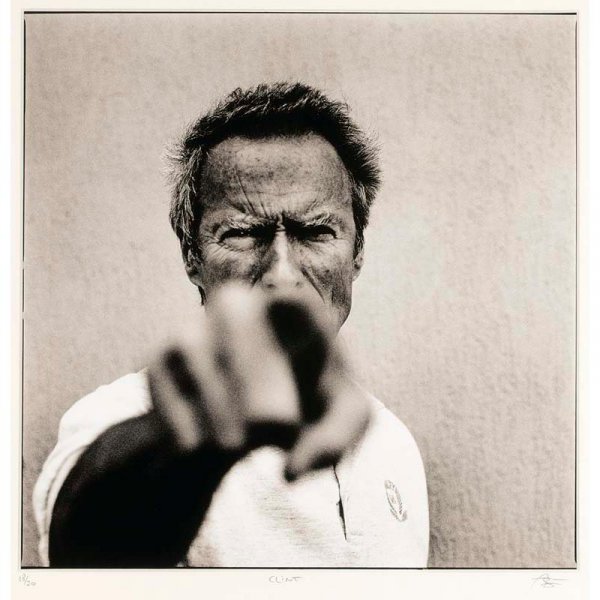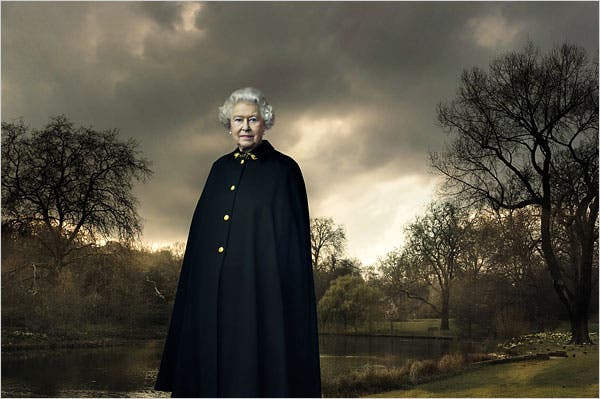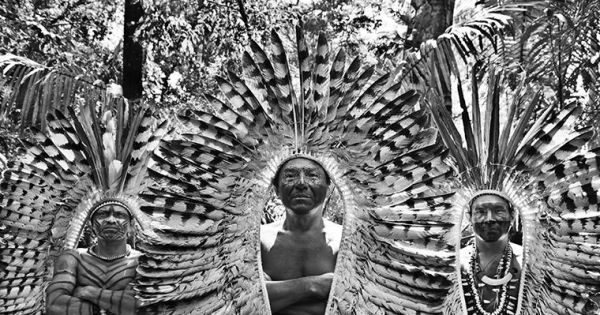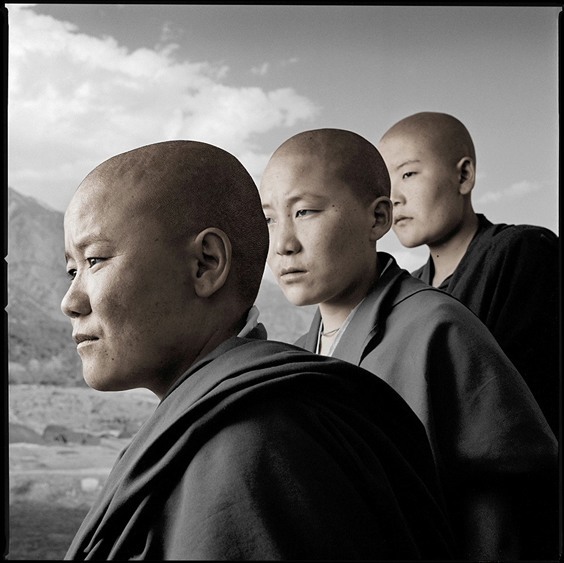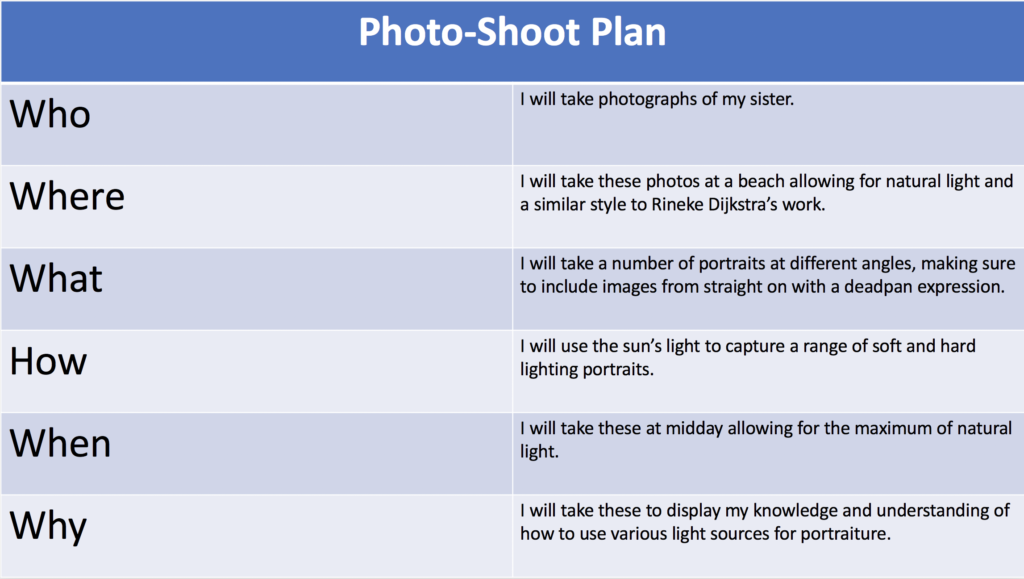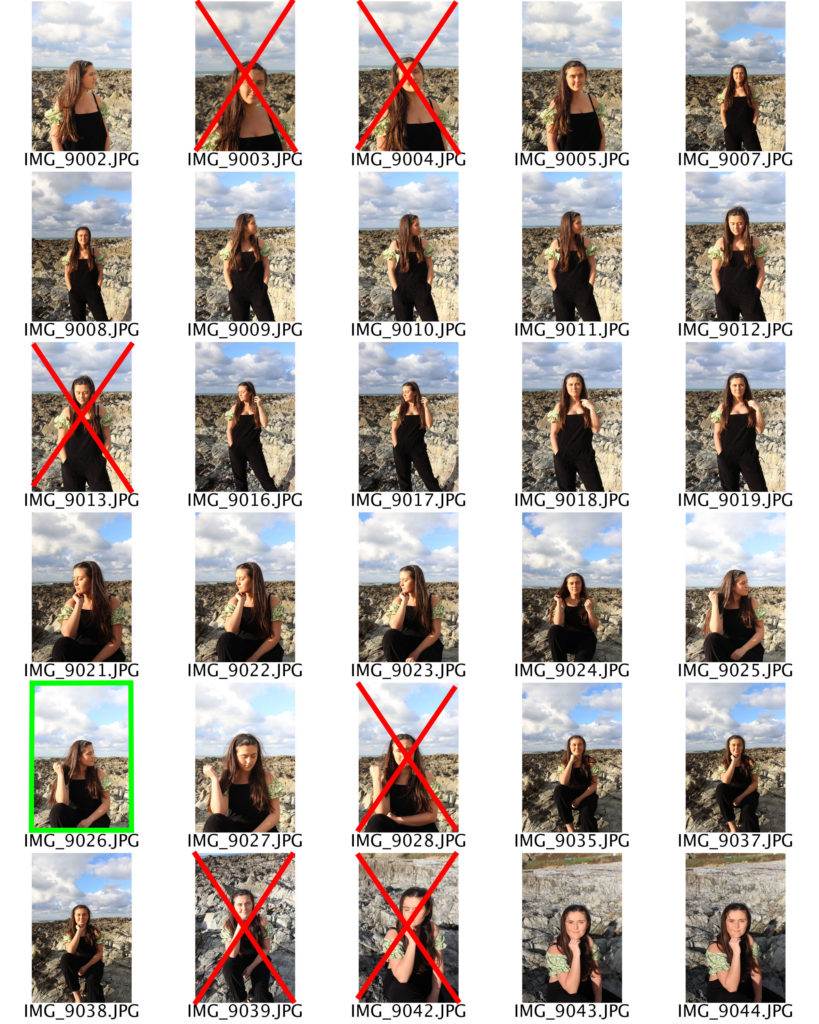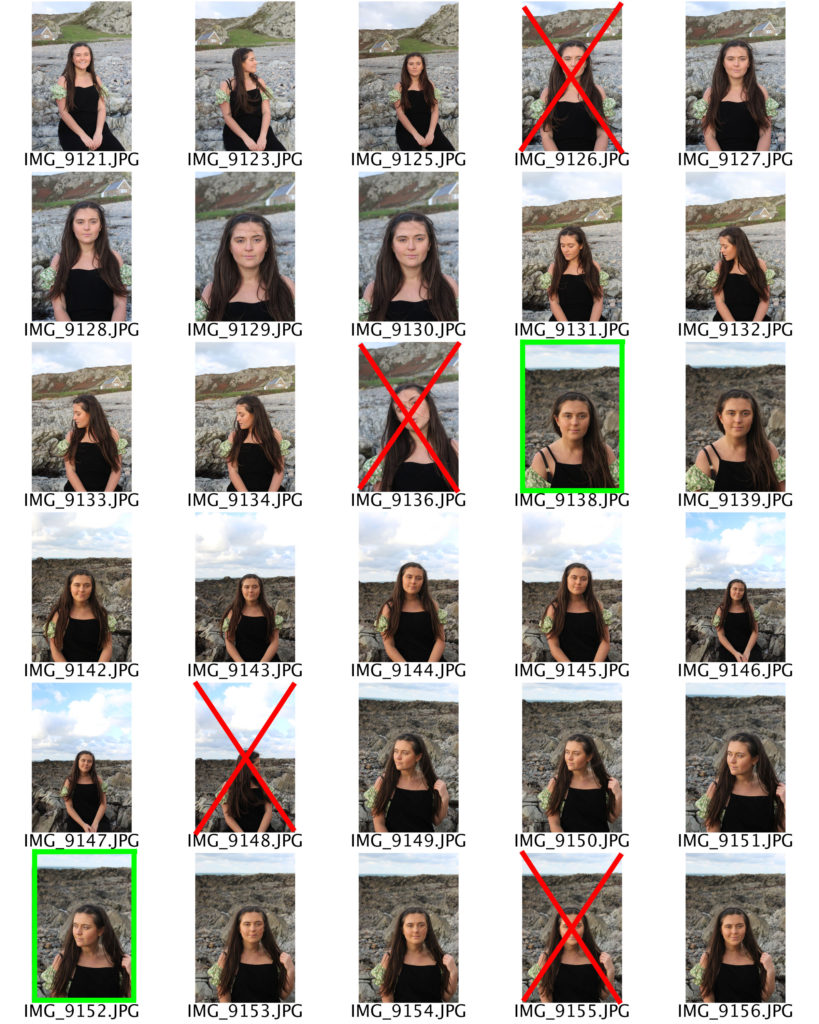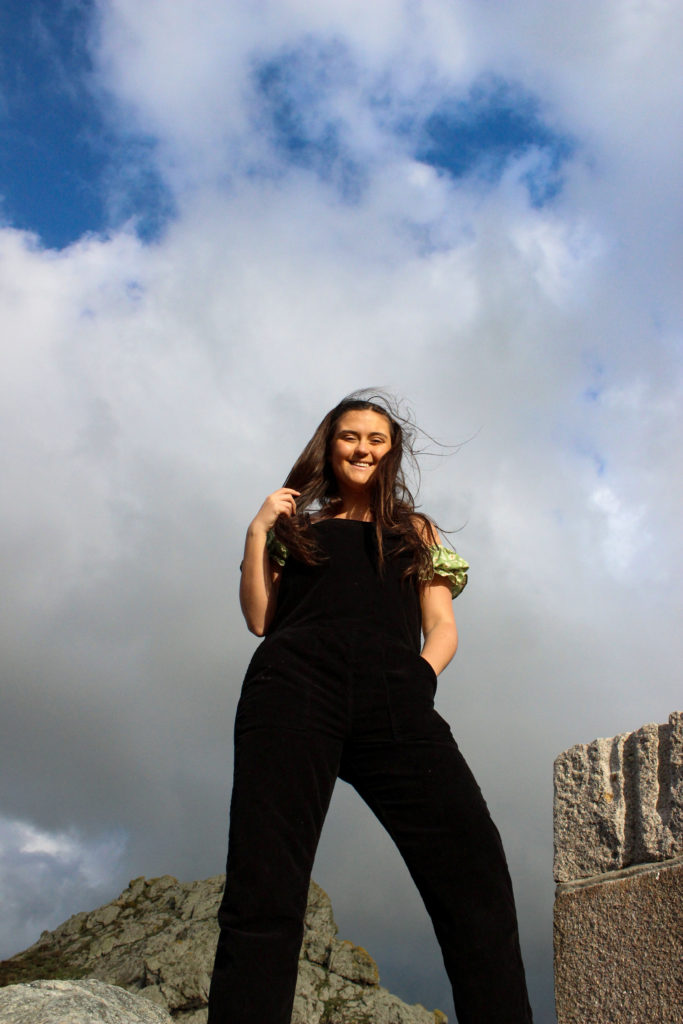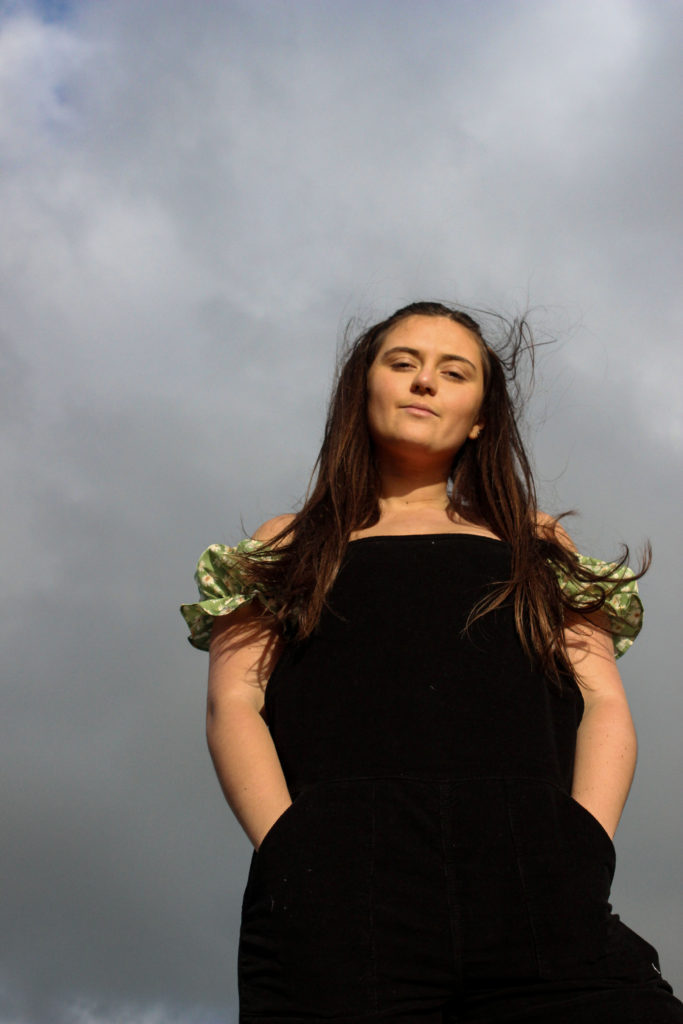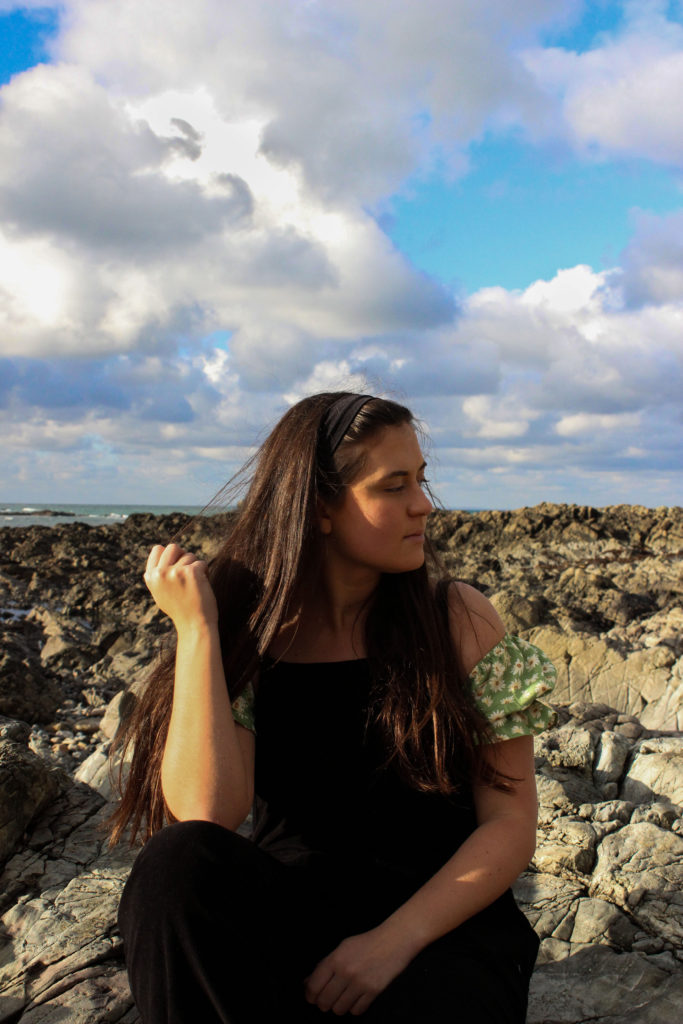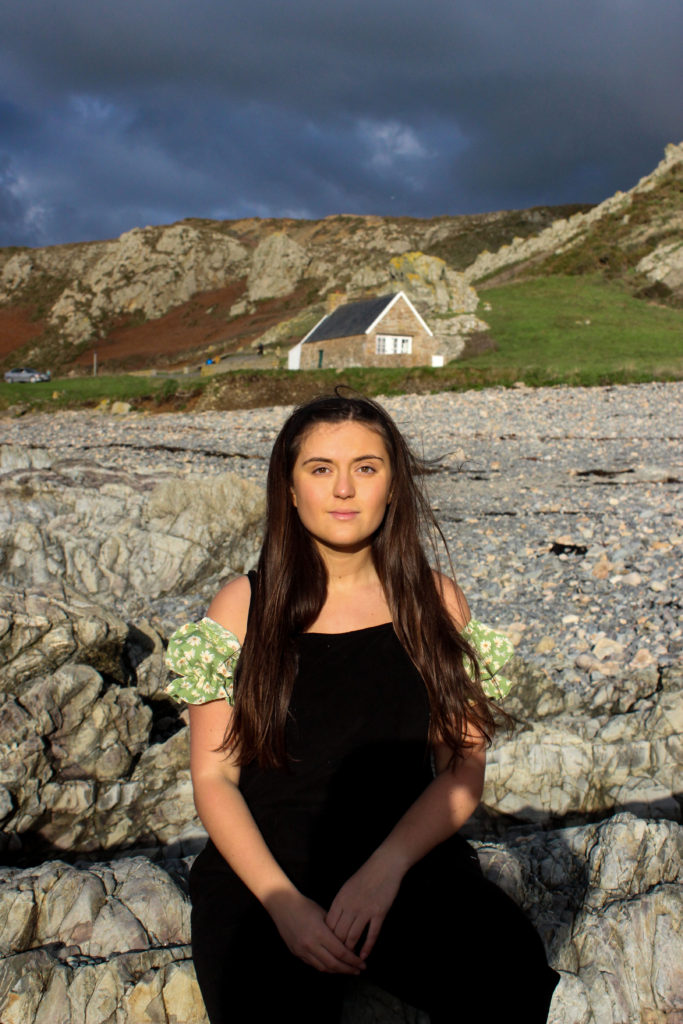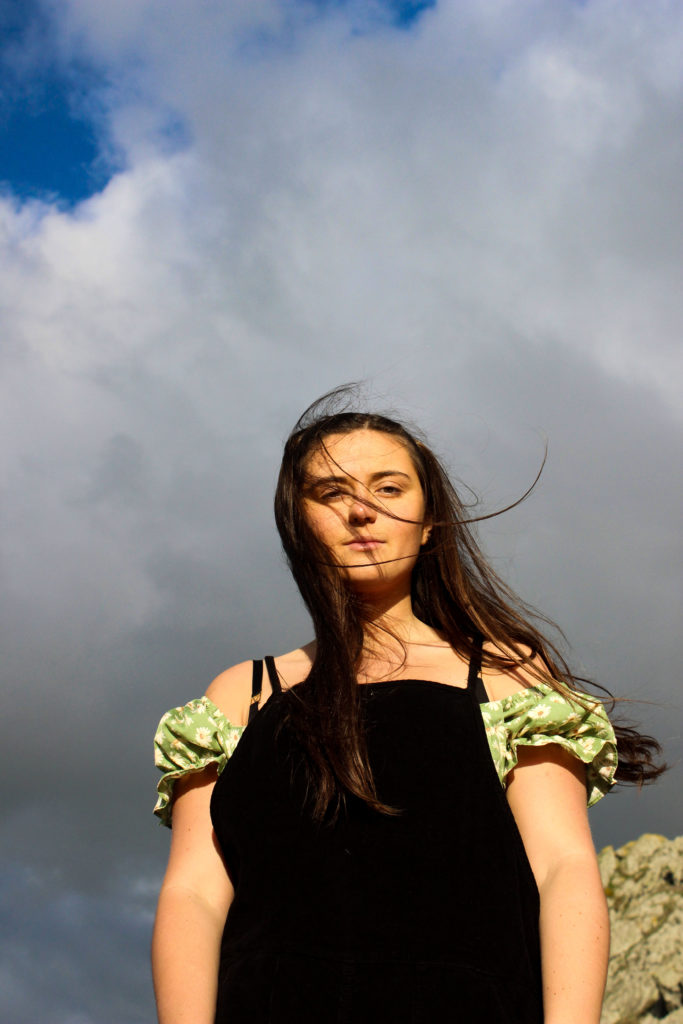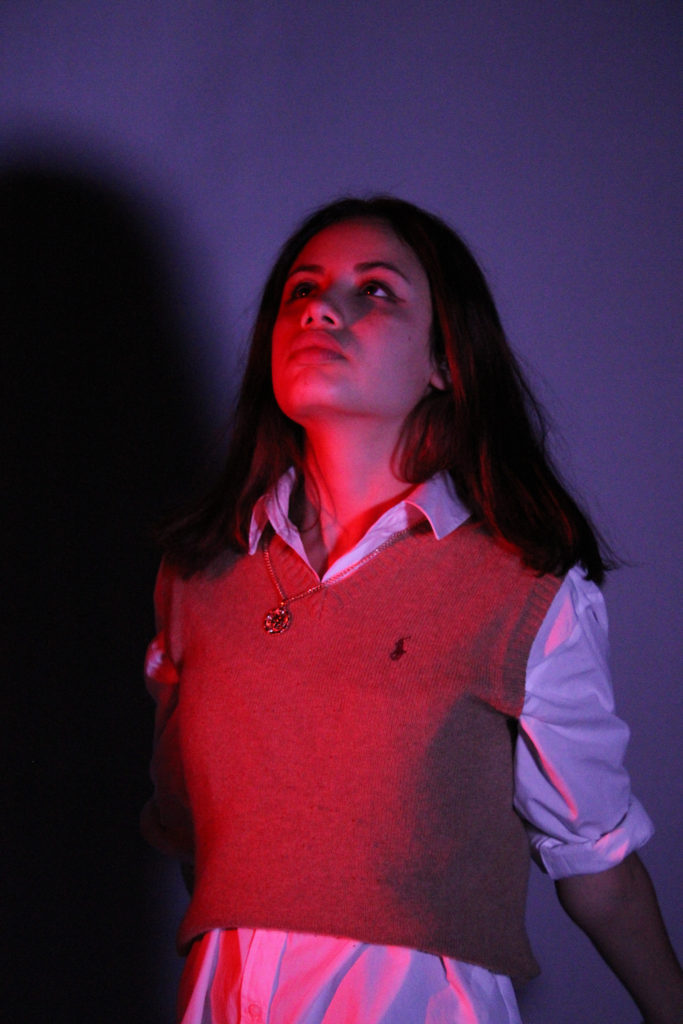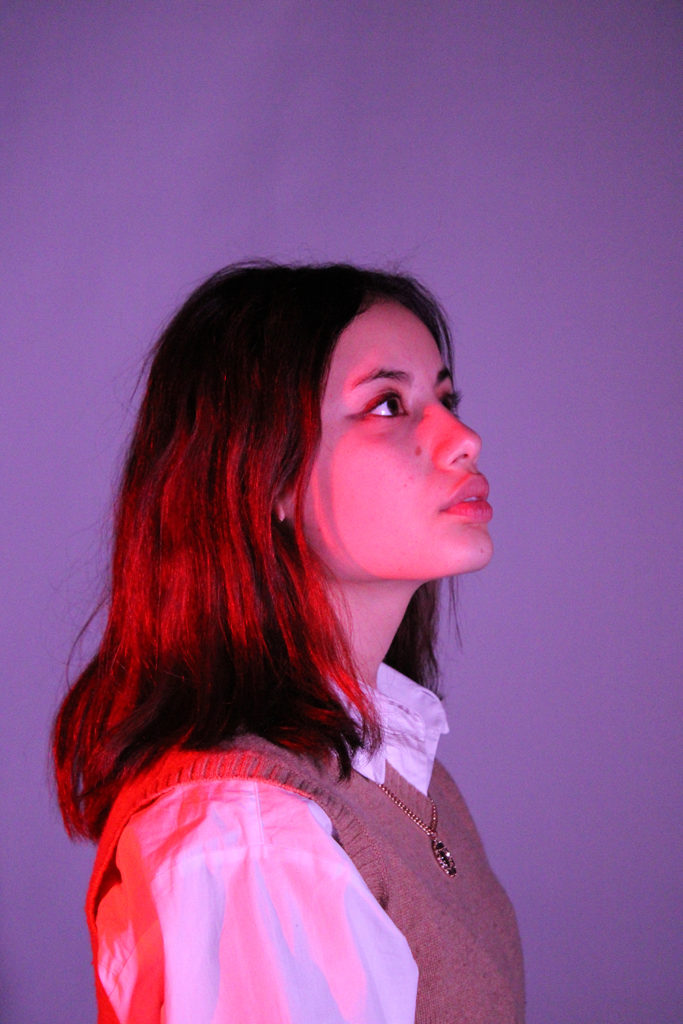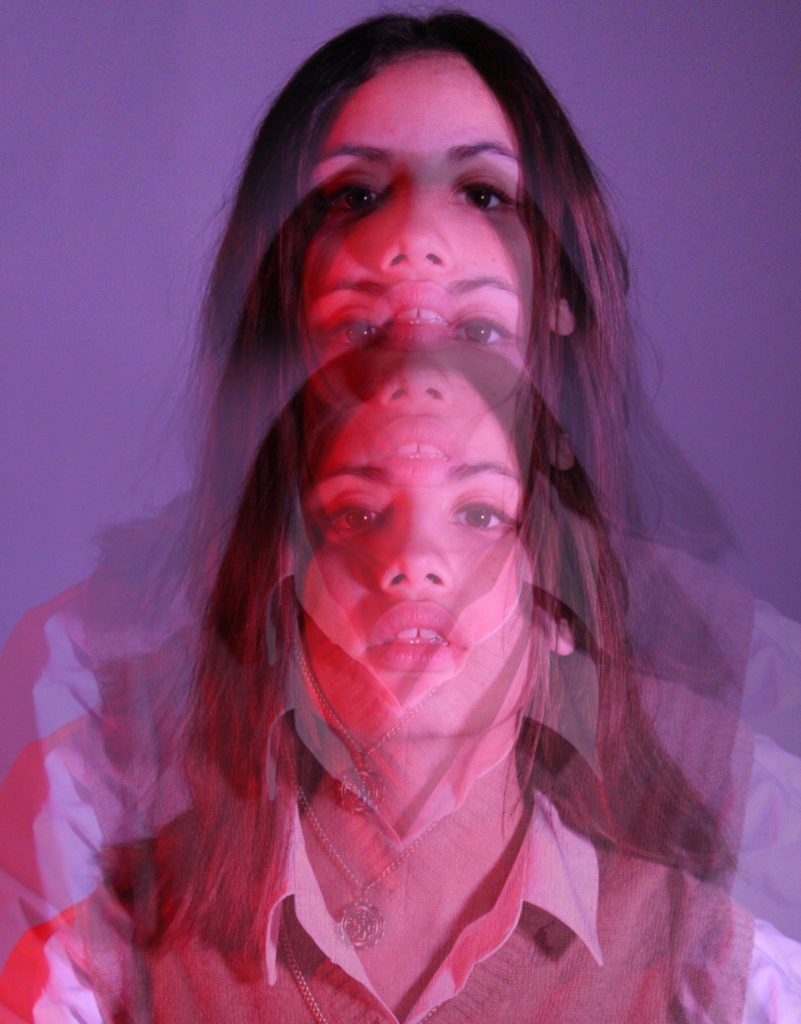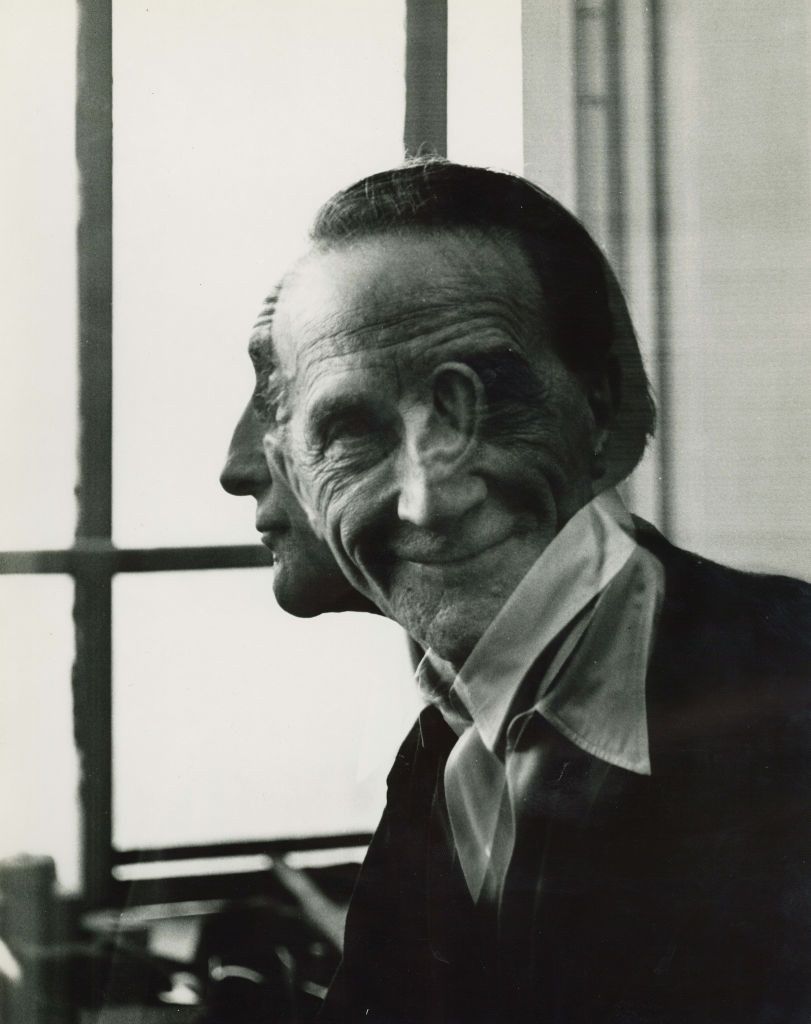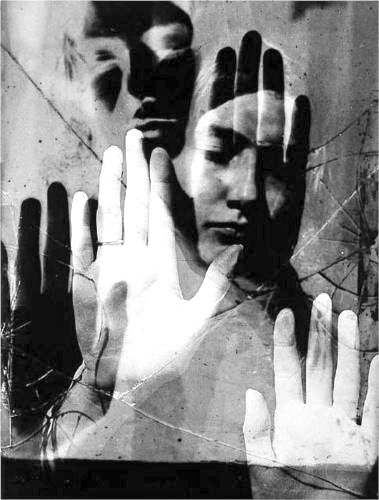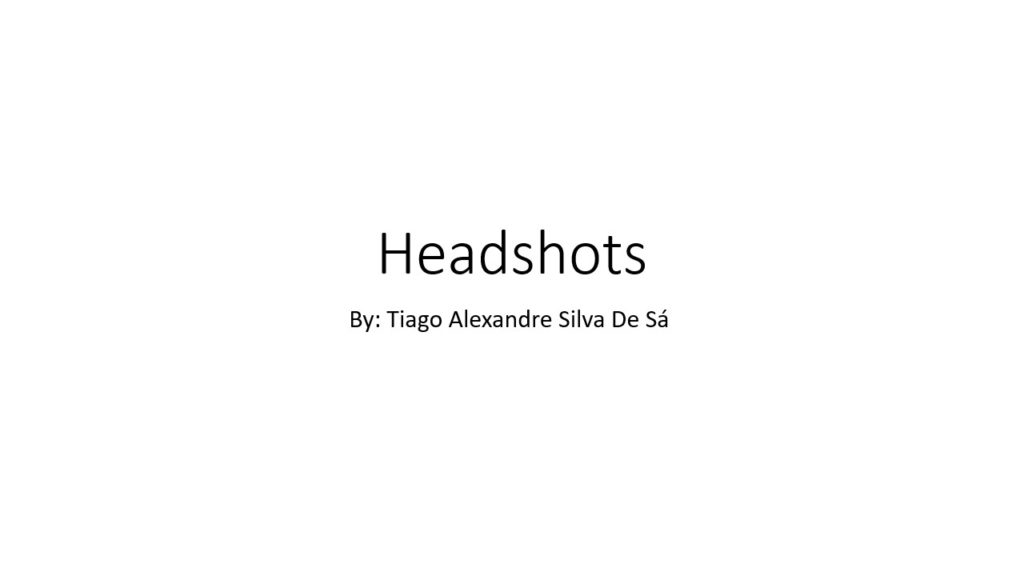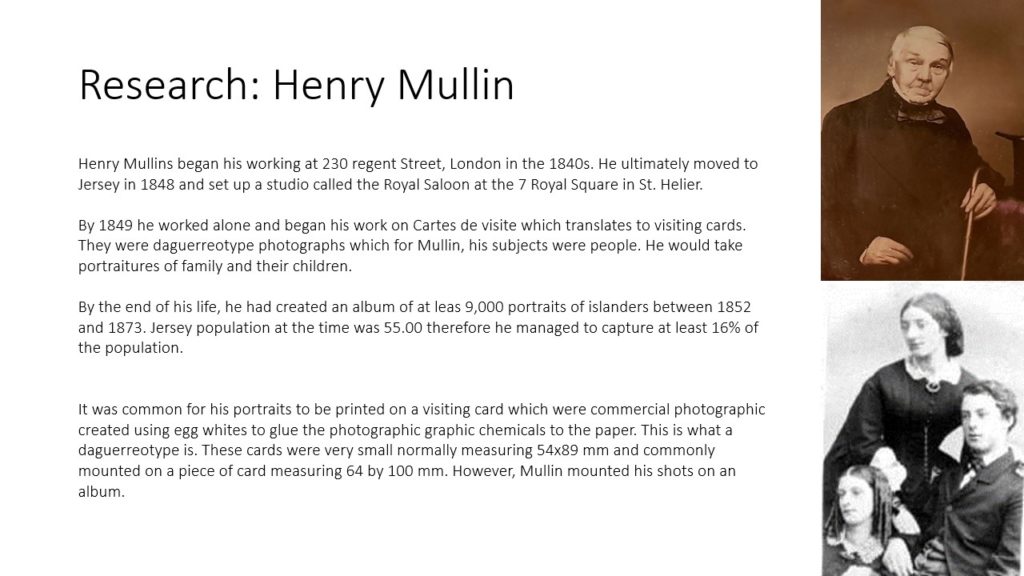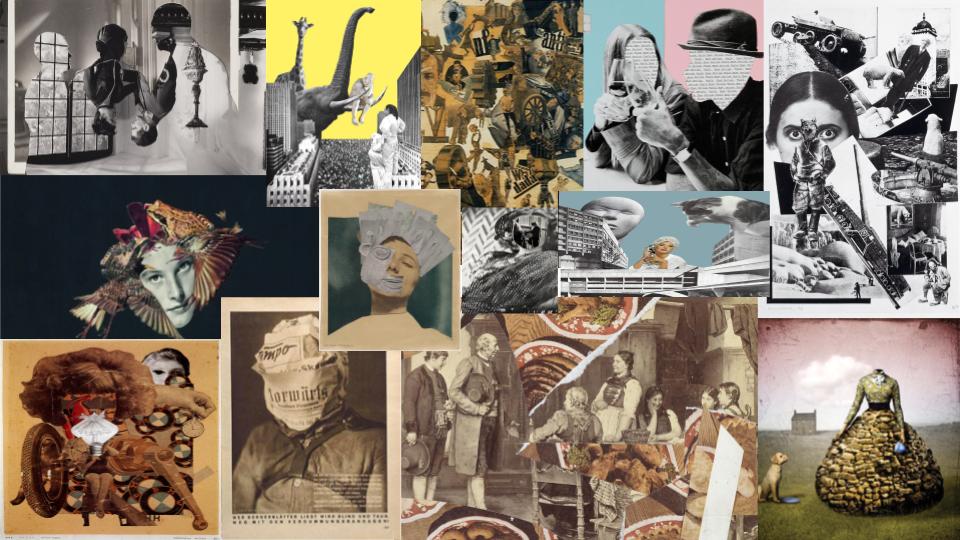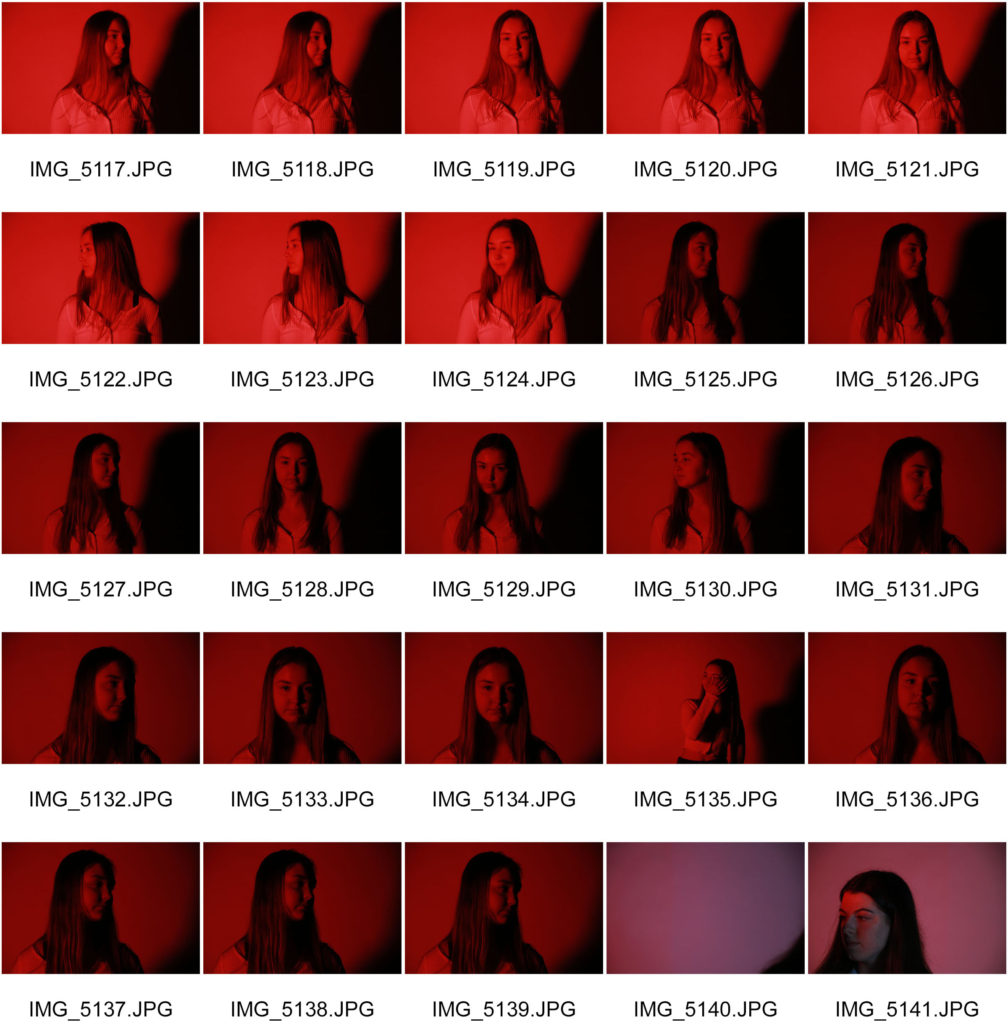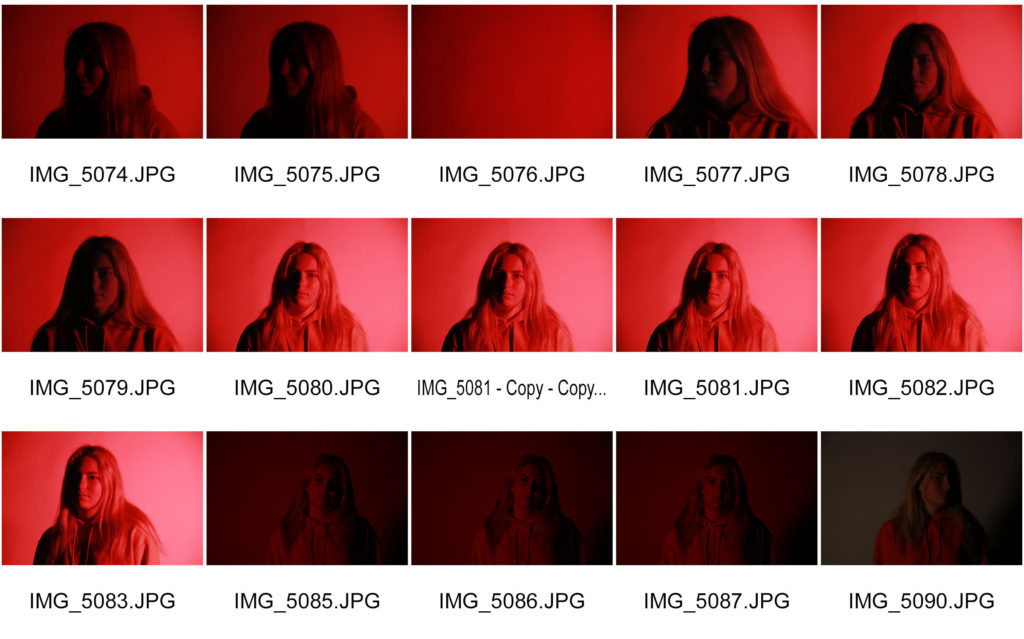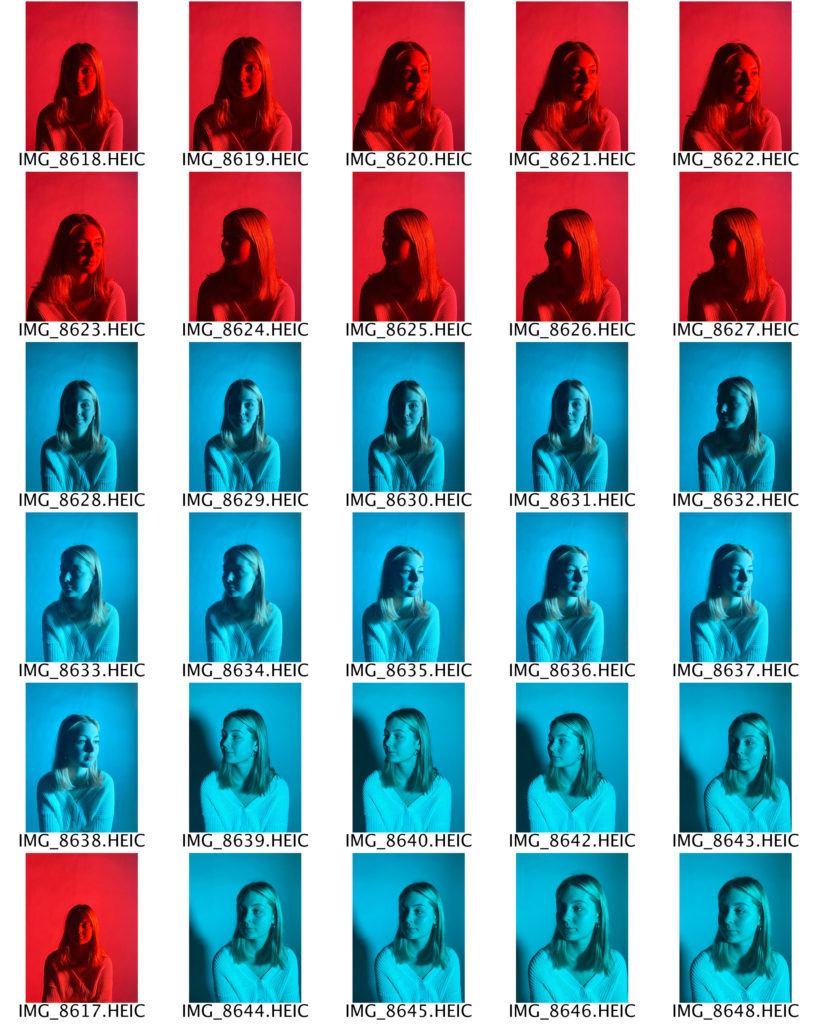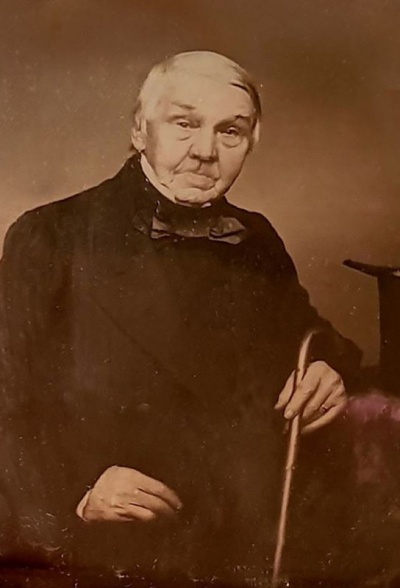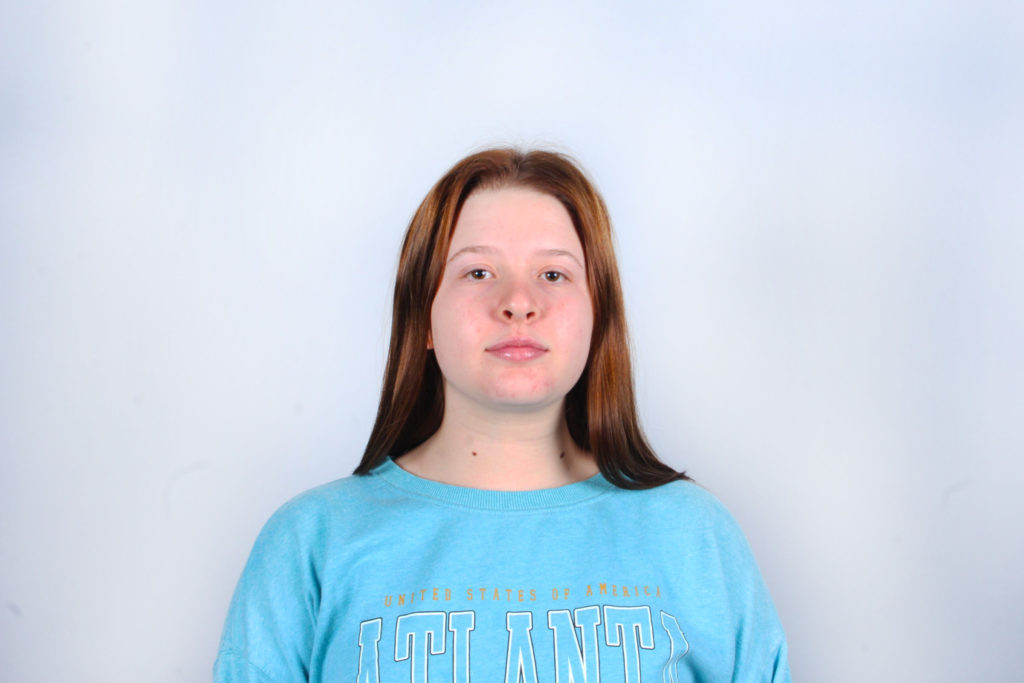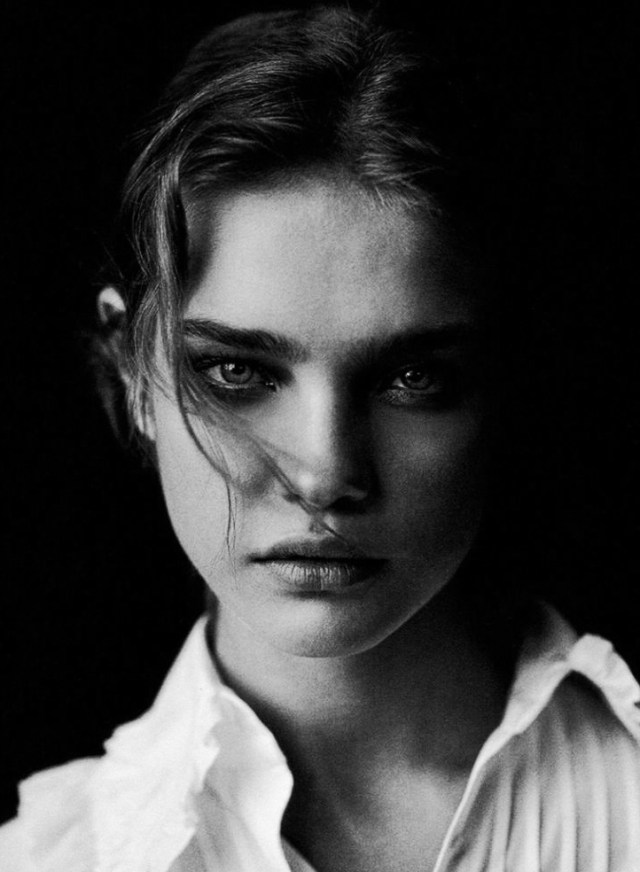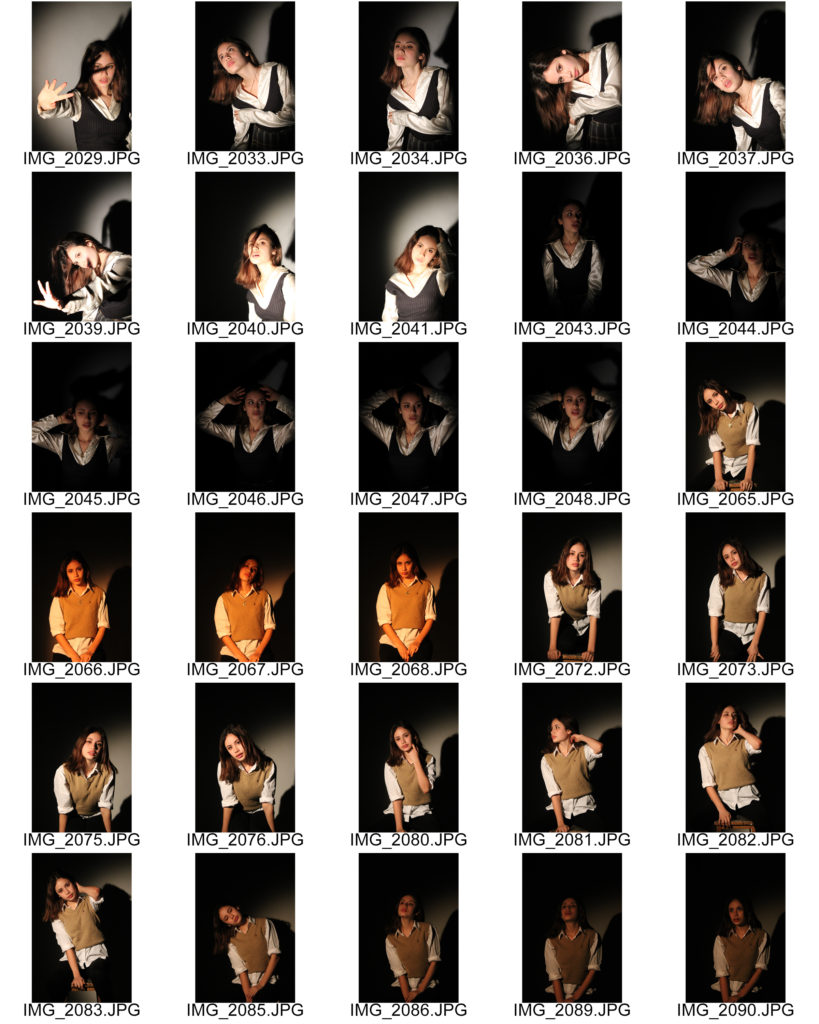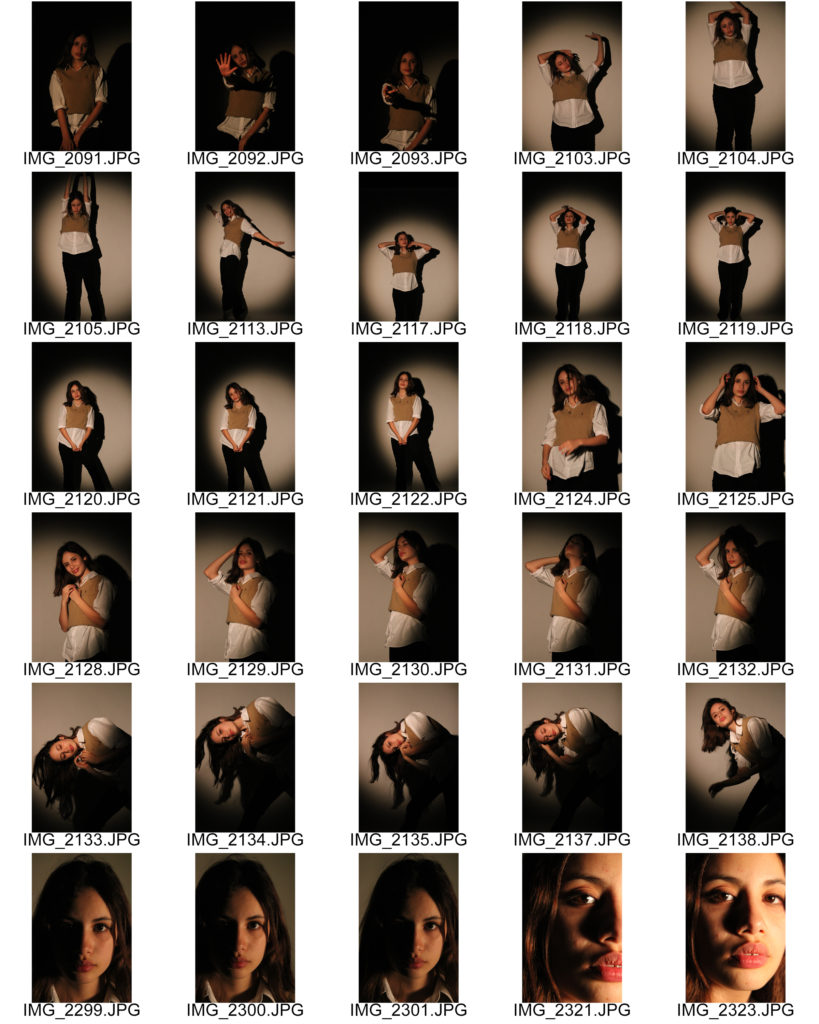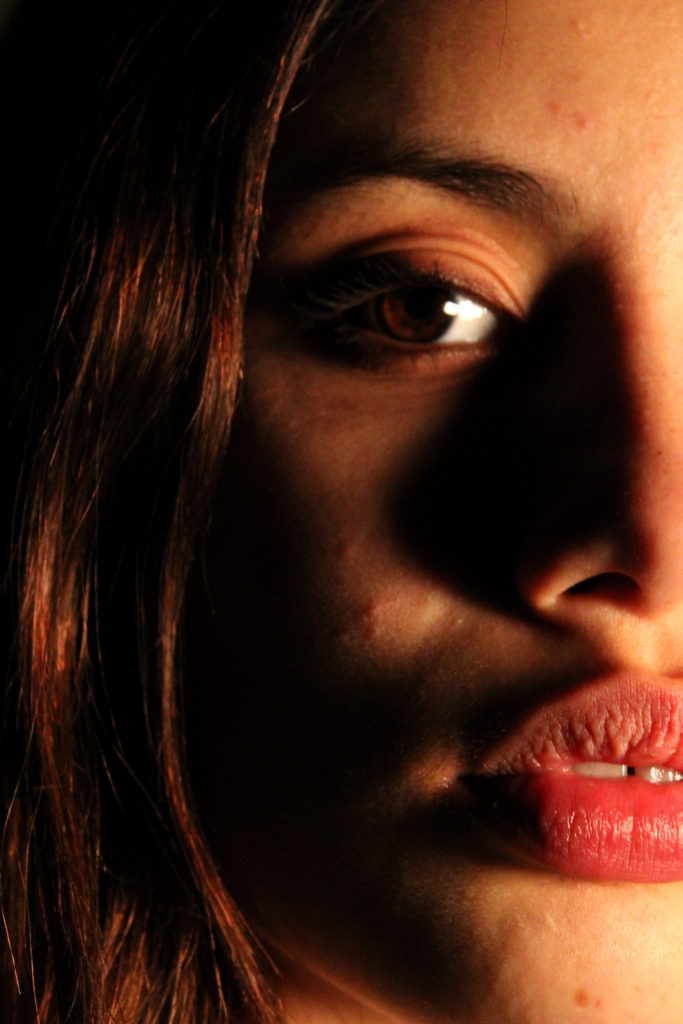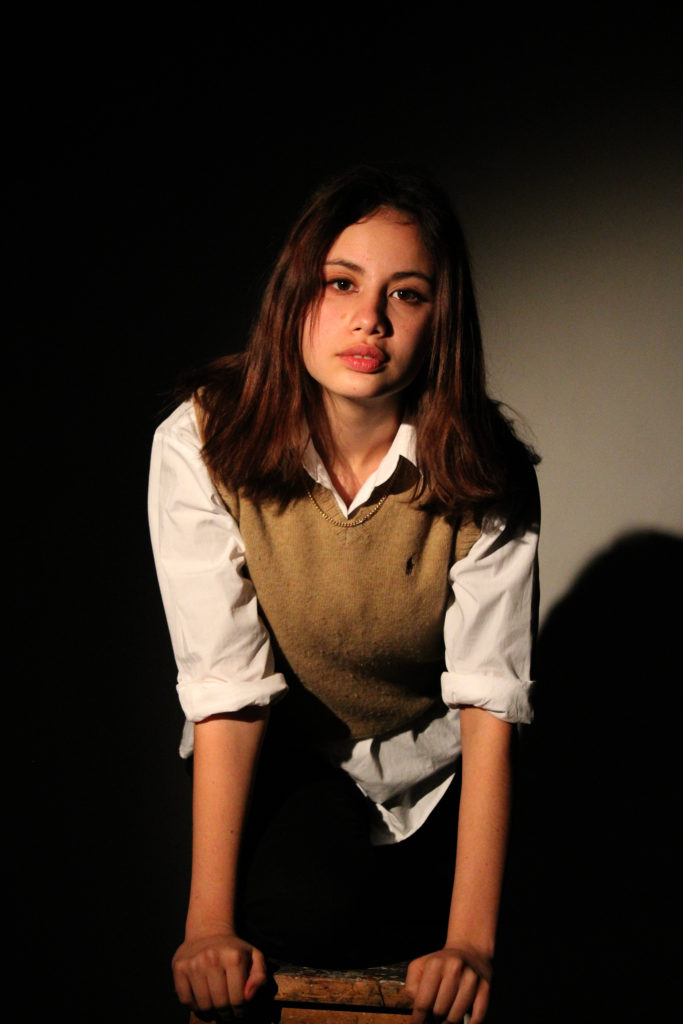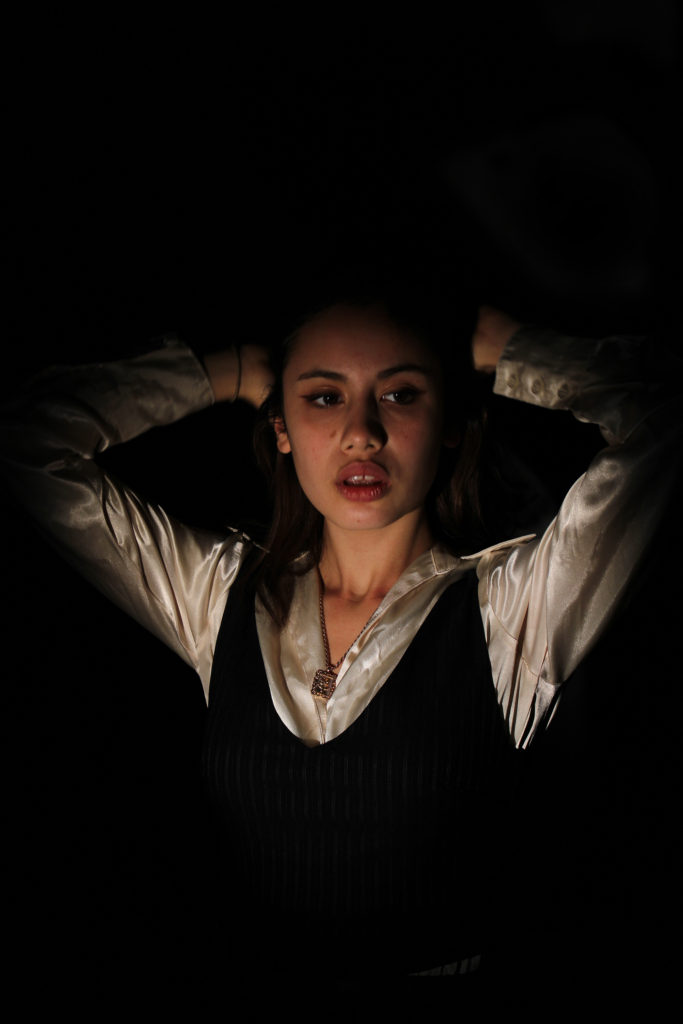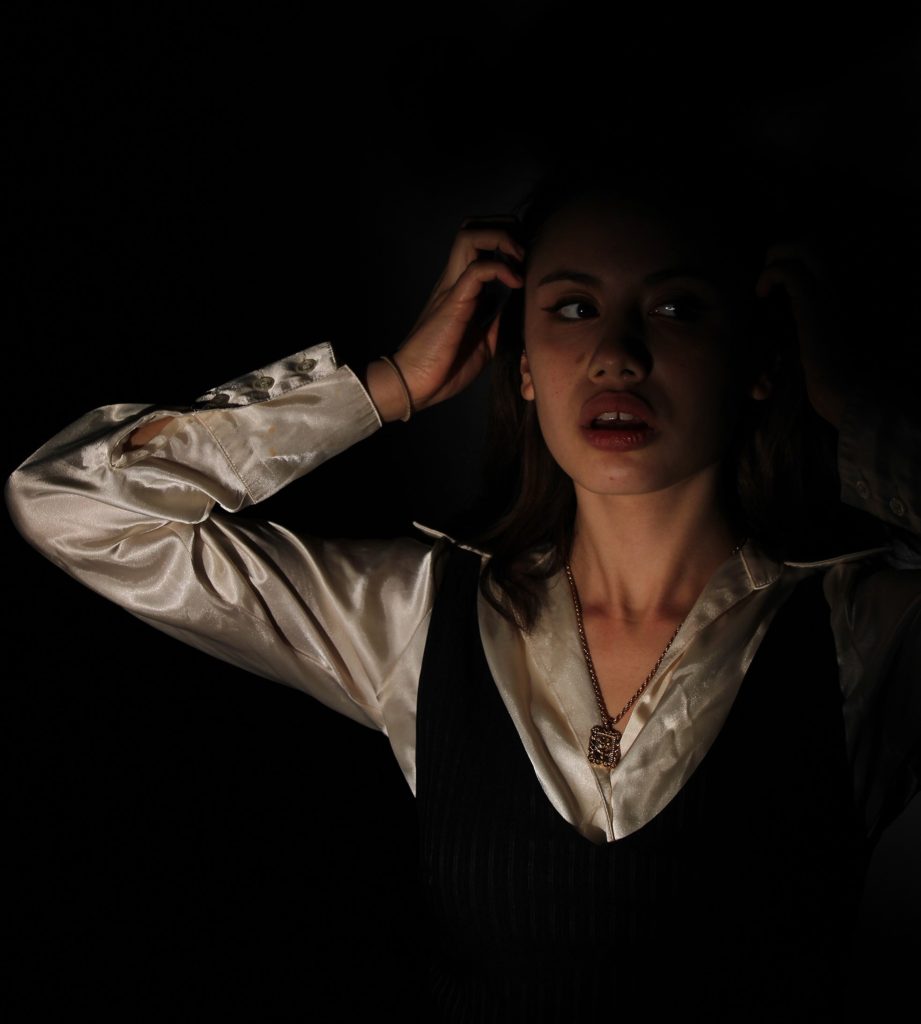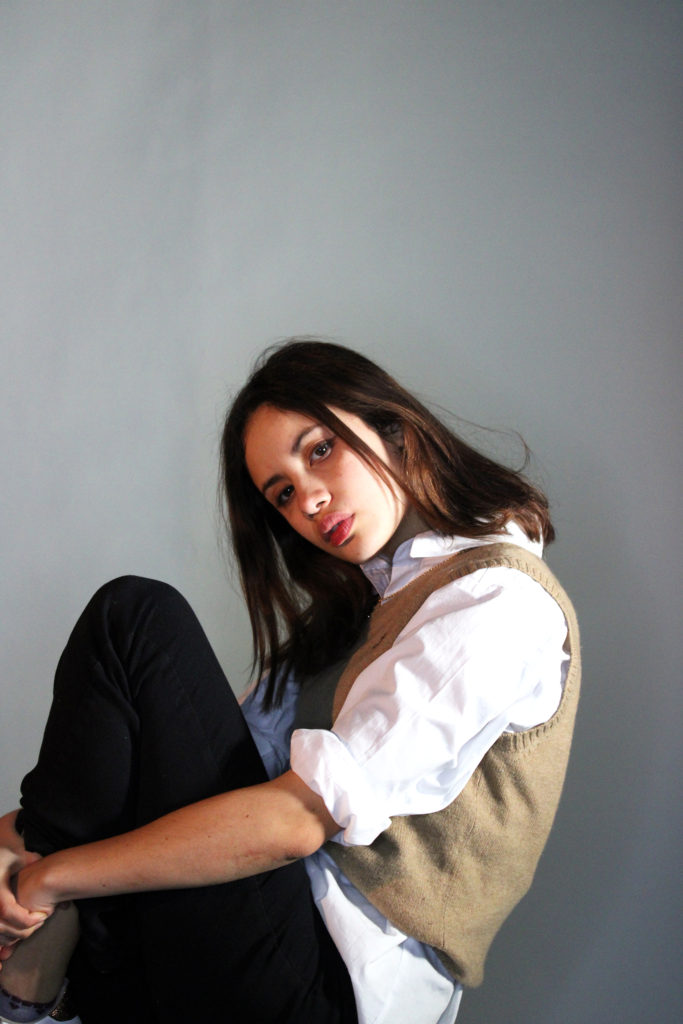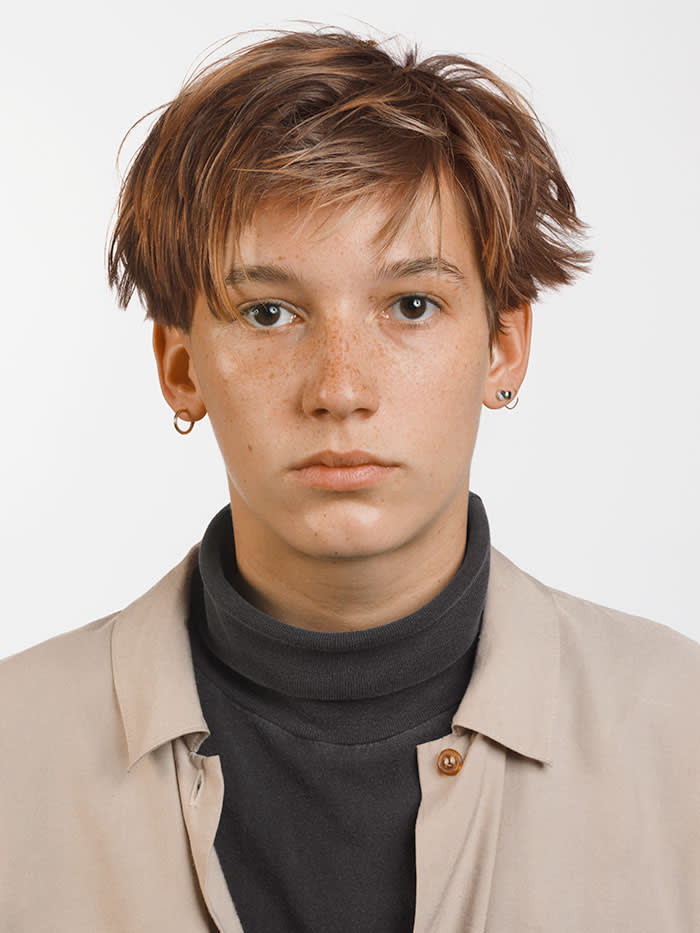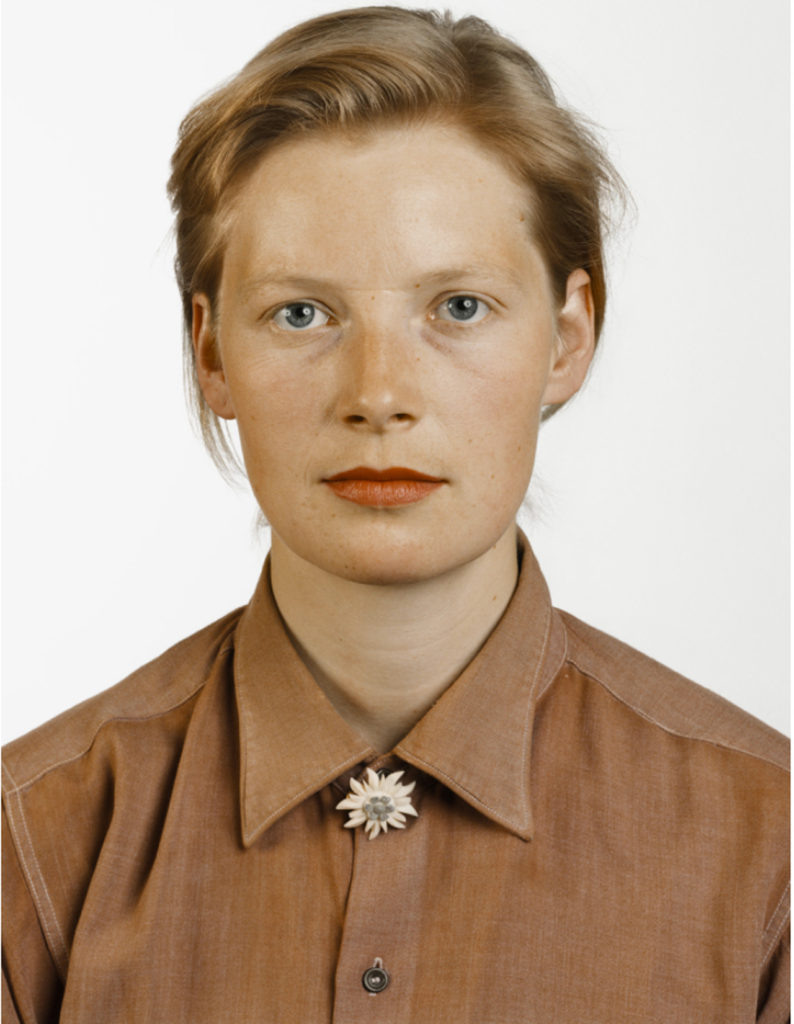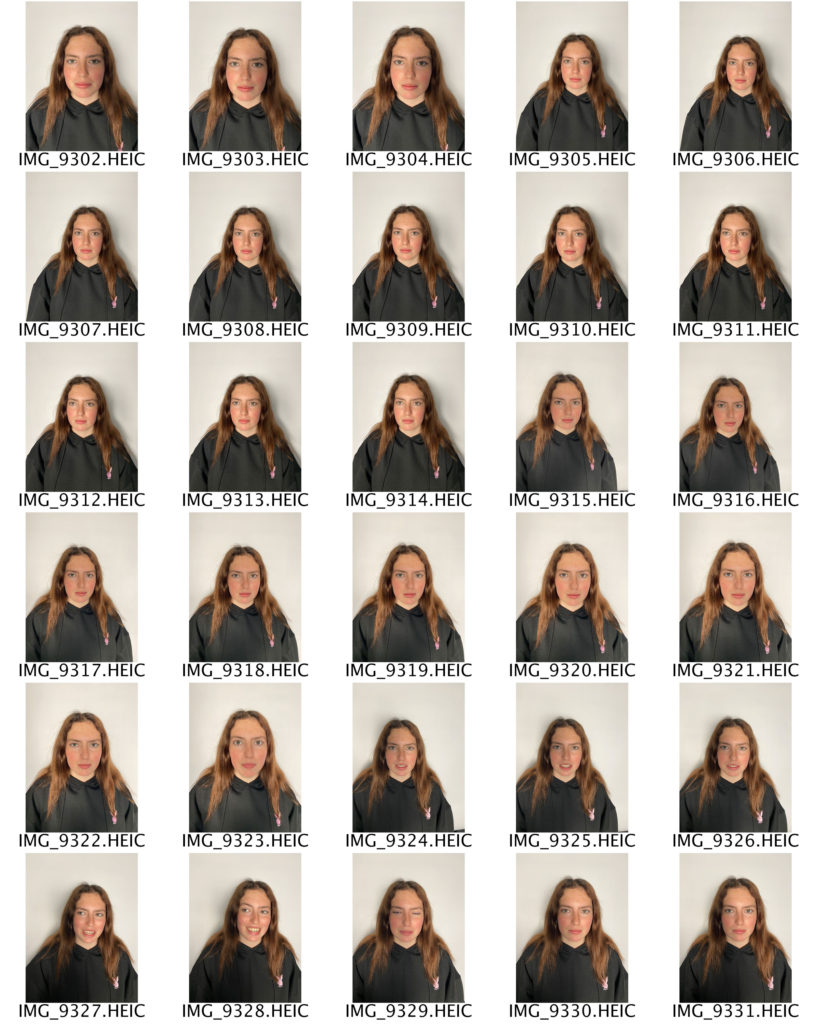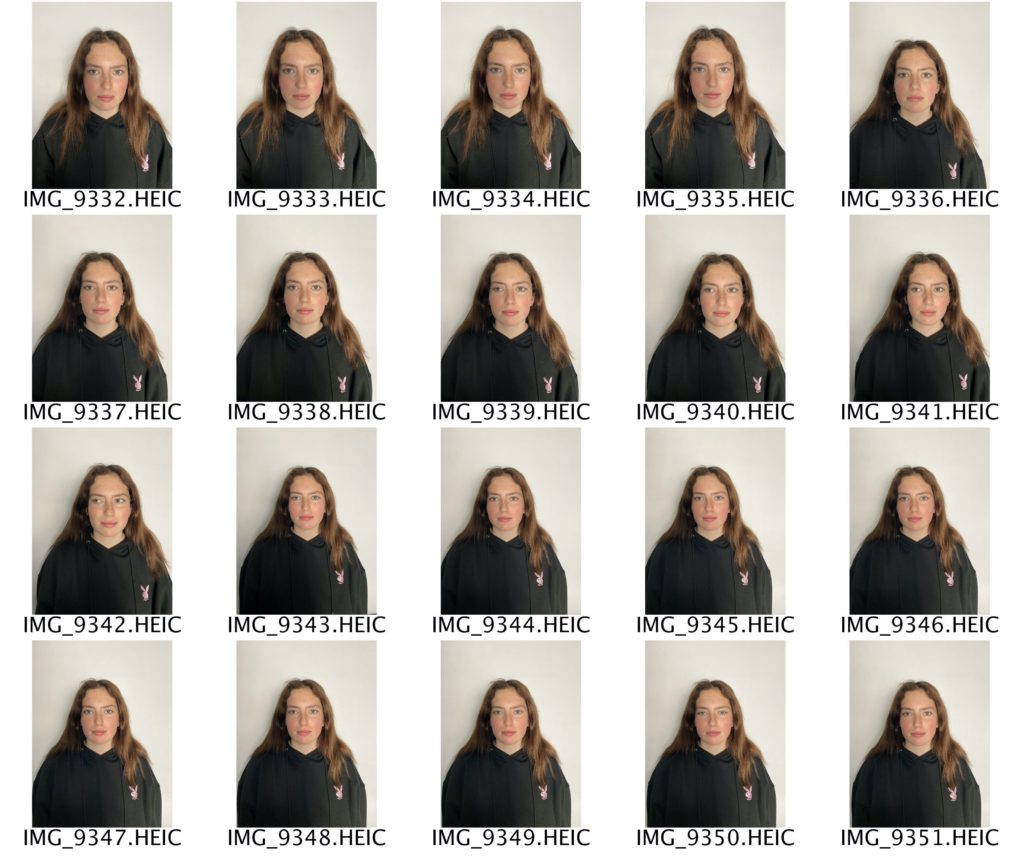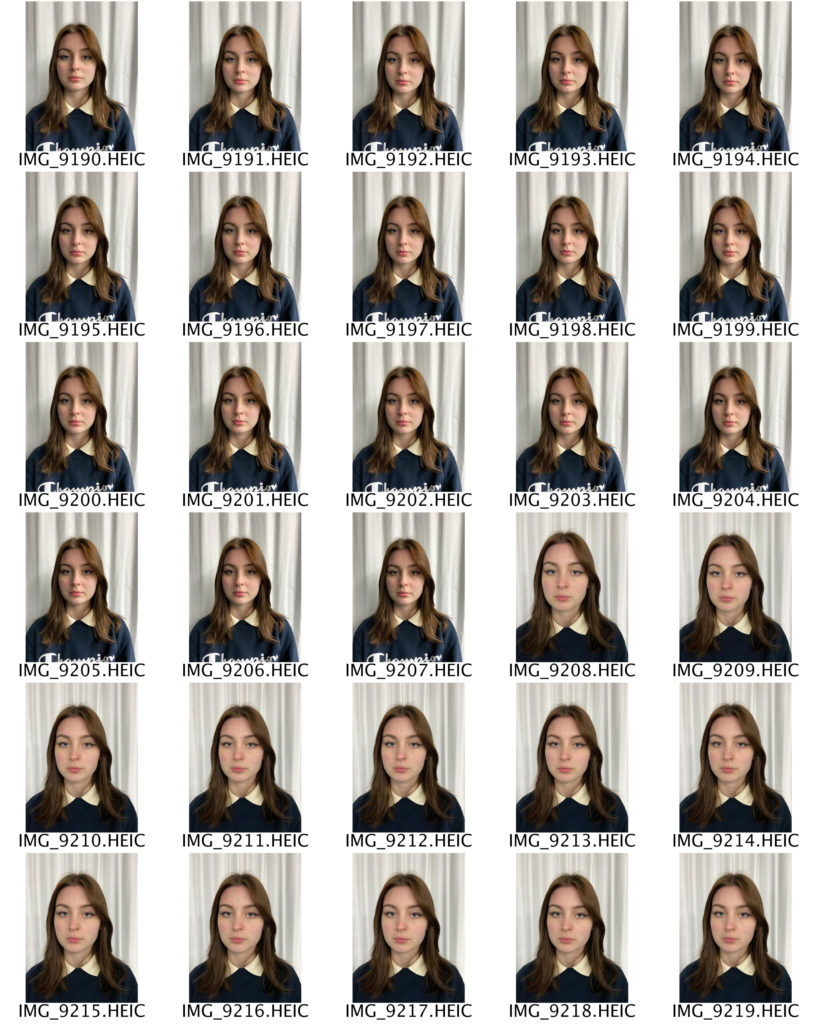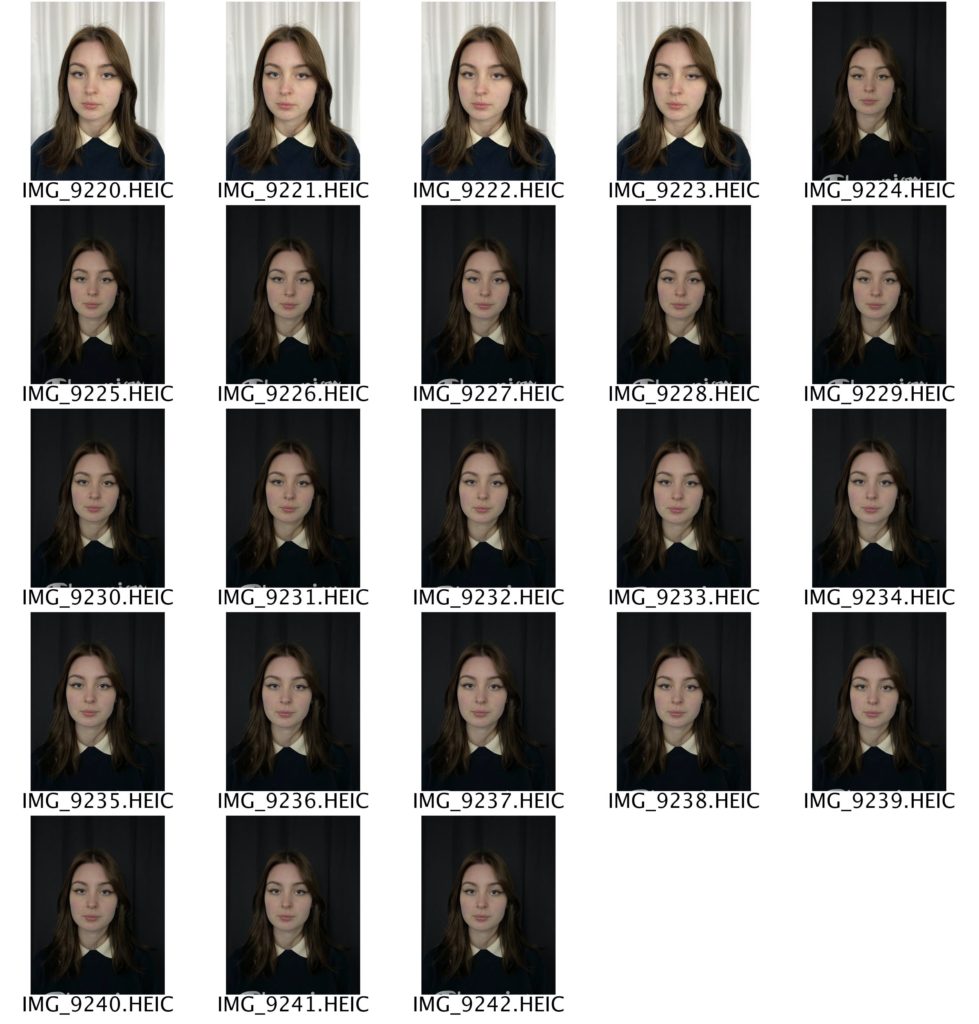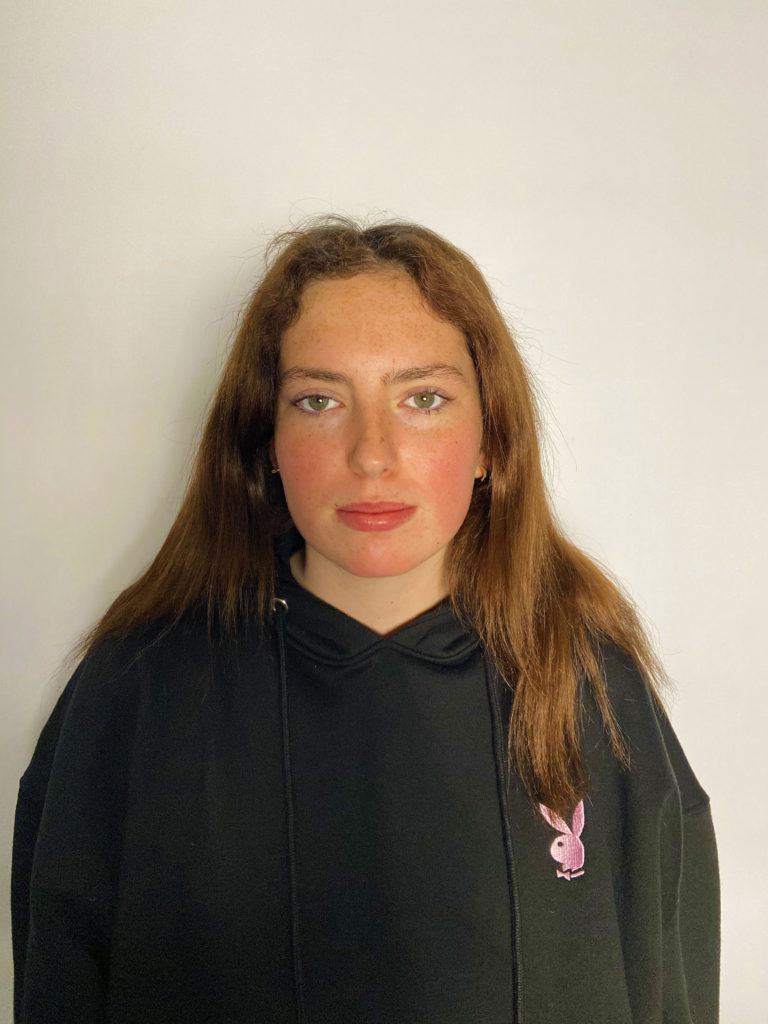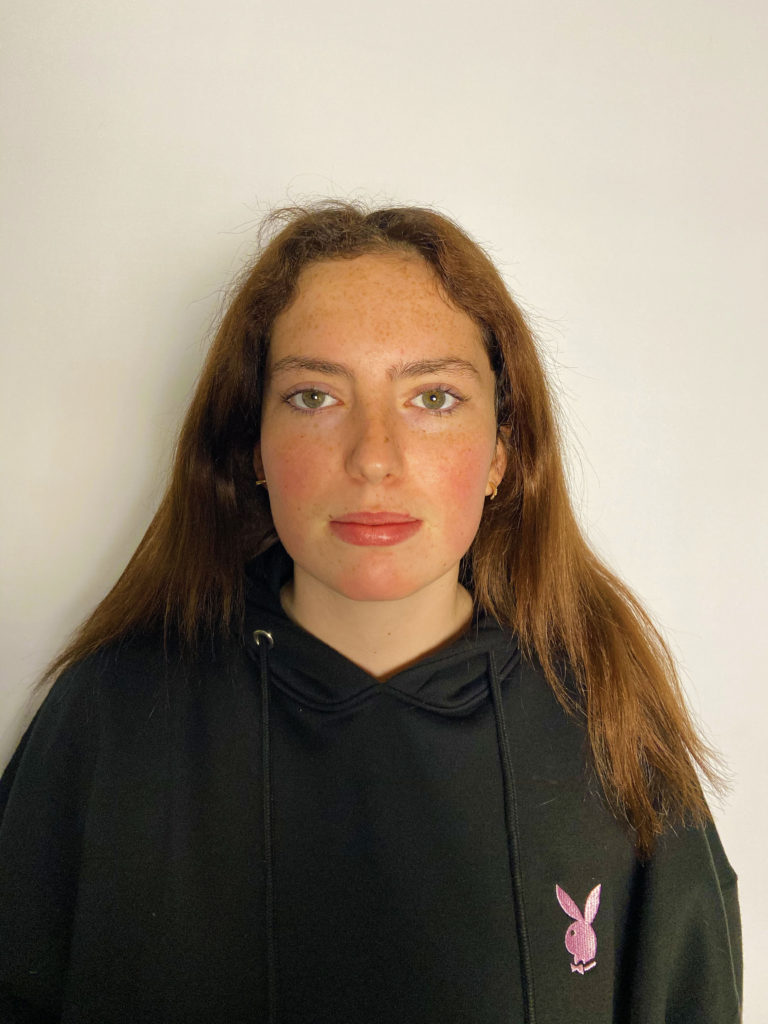Satoshi Fujiwara
Satoshi Fujiwara is a Japanese photographer who has been based in Berlin since 2012. In one project of Fujiwara’s work, he has taken inspiration from Michael Haneke’s 2000 film ‘Code Unknown’, in which there is a scene where a character secretly photographs different people sitting opposite him on the train. Fujiwara was influenced by this technique of candid photography and similarly captured images of strangers on Berlin trains. In an interview with Lens Culture, Fujiwara described how he shot and edited his images in a way to keep his subject’s identities anonymous. It is clear that Fujiwara captured these images during daytime, as the direct sunlight provides natural lighting on his ‘model’s’ faces.
Photoshoot Plan
Due to having to isolate from school because of the COVID-19 pandemic, I will not be able to use the photography studio to conduct this photoshoot. Instead I plan on creating a ‘home studio’ using a blank white wall as a background and lighting my subject with a multi head floor lamp. Although it will be more of a challenge to re-create Fujiwara’s up close work from home, my idea is to only take inspiration from his project and work with the lighting/set up I am able to create at home.
Who – I plan on photographing my mum for this shoot as she is comfortable being in front of the camera and will be relaxed while I capture images that are quite invasive and close to her face.
What – I will be capturing images of close-up facial features such as lips, jaws, cheeks as well as close-ups of the full face. I plan on asking my model to have a conversation with me while I take some of the photos in order to capture natural images.
Where – As previously mentioned, I will have to conduct the photoshoot at home by creating a studio and using lighting I have around the house. I plan on taking these images in my lounge, as I have a blank white wall that can serve as a plain background for the shoot.
How – I will attempt to create shadows on and around the subject’s face by moving the different heads of the lamp I plan on using to different positions to highlight contrasting parts of her face.
Why – I wish to experiment with how close-up images can distort someone’s face so it is almost unrecognisable, taking inspiration from the works of Satoshi Fujiwara when he was influenced by the film ‘Code Unknown’.
Contact Sheets
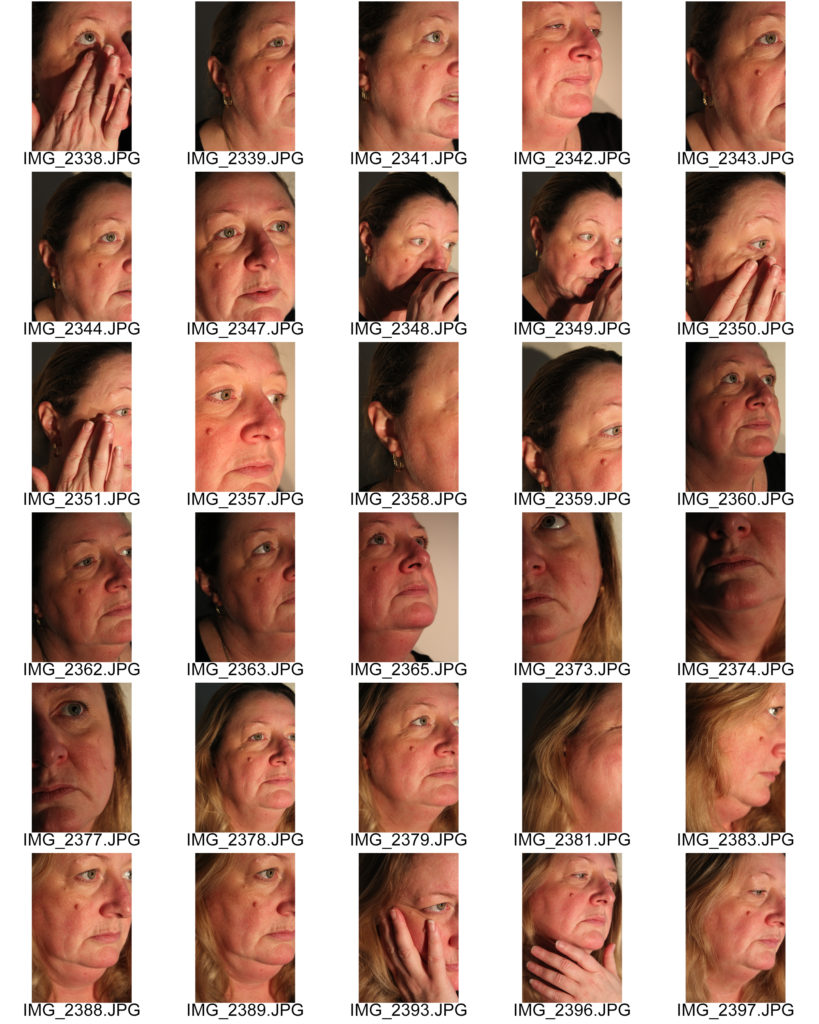
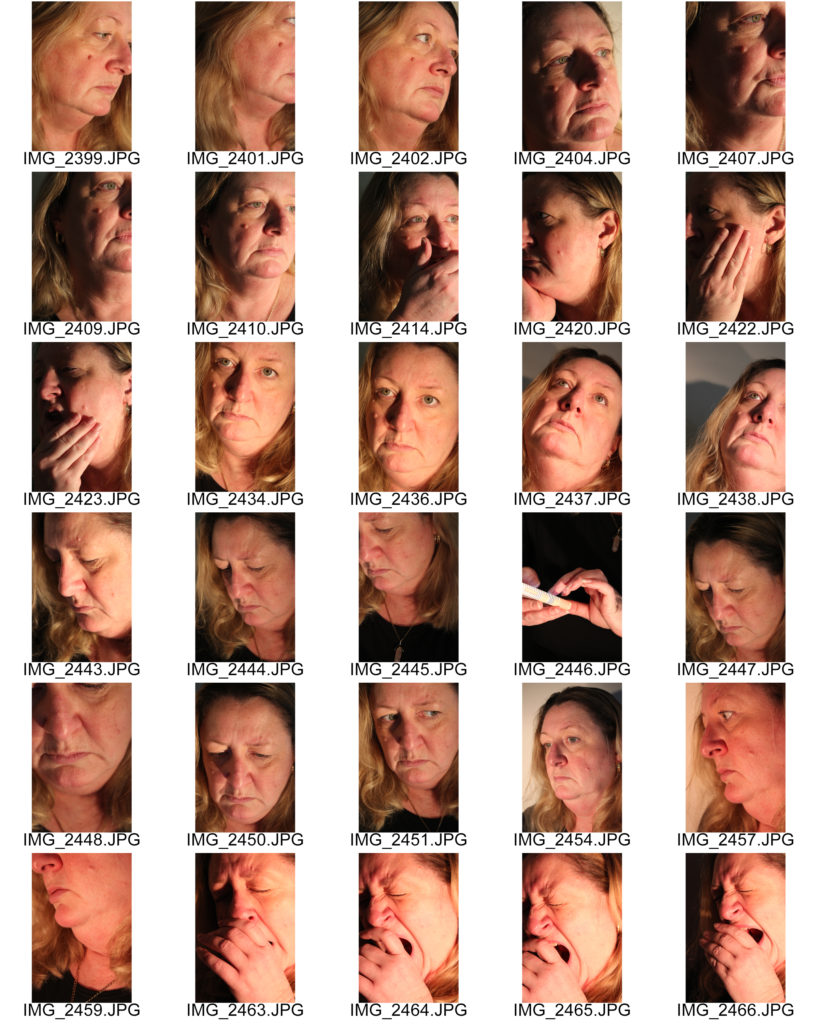
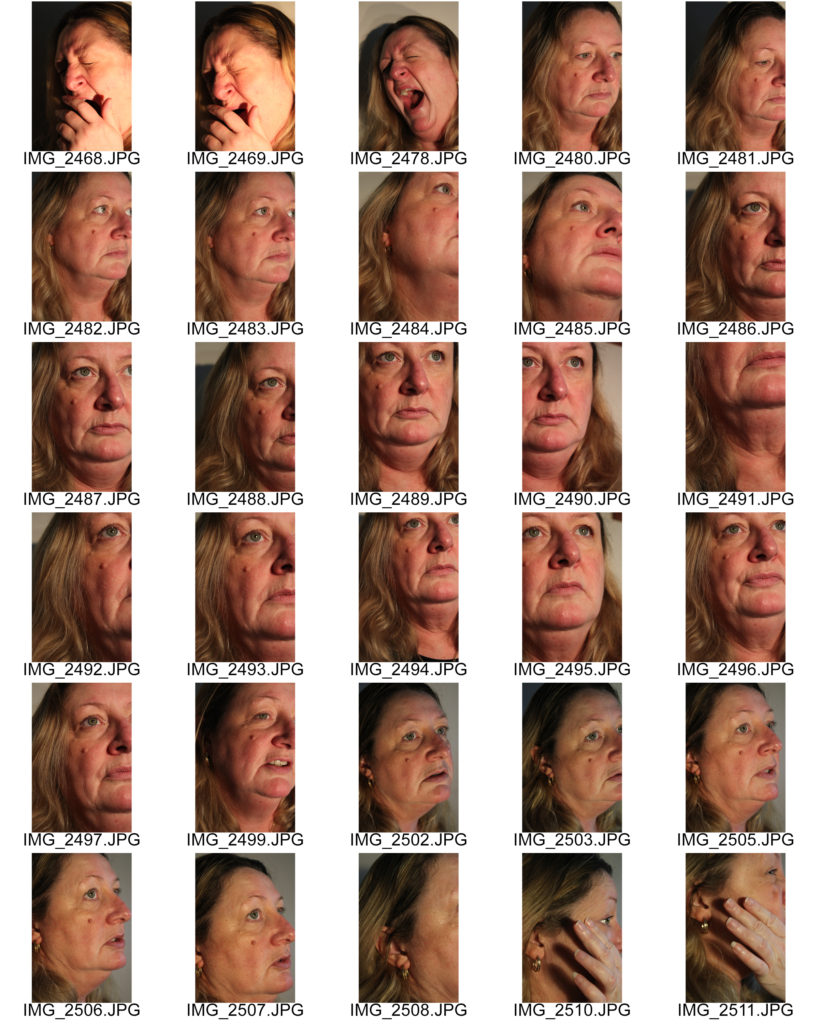
Selected Images
Comparison to Satoshi Fujiwara
Satoshi Fujiwara uses natural sunlight to capture his candid images, I have recreated this in my shoot by directing my lighting to form harsh shadows across my subject’s face, similar to those Fujiwara took on the Berlin trains. This reflects the chiaroscuro technique used in renaissance paintings to create drama and atmosphere in images, it shows the strong contrast between light and dark. This use of shadow and highlight creates a more intense mysterious atmosphere in mine and Fujiwara’s images, which is furthered by the subject’s longing facial expression looking away from the camera. Similarly, both image’s direction of light on the subject’s face create a clear focal point for the observer at the subject’s eyes. They appear to have a glossy texture that catches the observer’s attention against the otherwise shadowed face. Nevertheless, Fujiwara has captured his image from a low camera angle whereas I have angled my camera at eye-level. I chose to photograph the subject in this way in hopes of creating a more ambiguous image and allowing the observer to interpret the subject in their own way. I believe an eye-level angle helps achieve this as it does not give the impression that the subject is looking up or down on whomever is looking at the image, therefore not giving them a set status.
Final Image Analysis
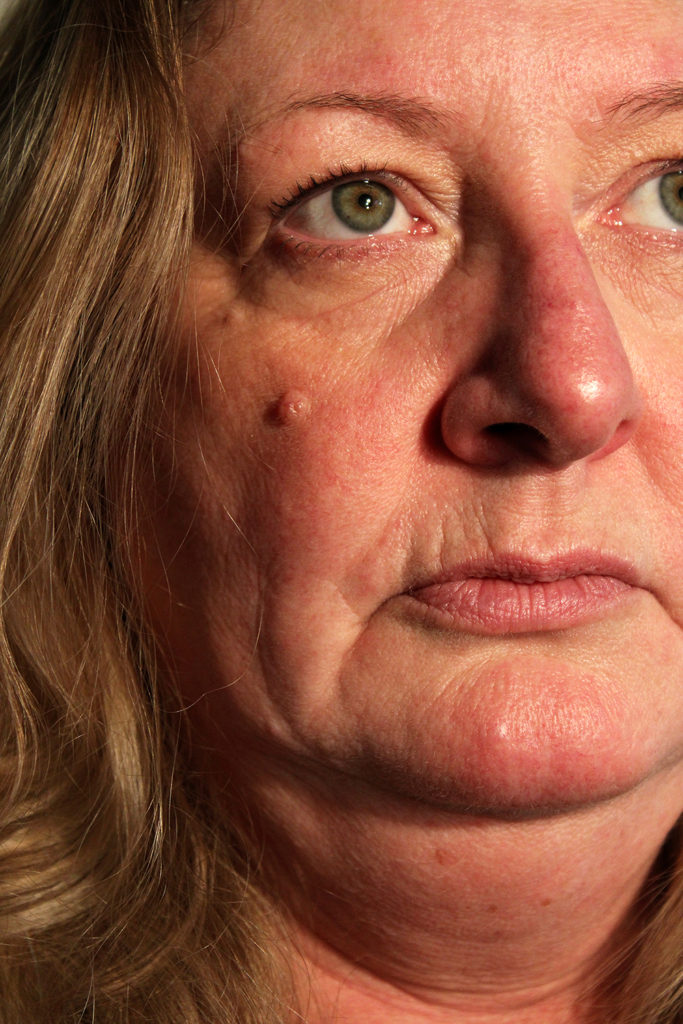
I have chosen this image for my final ‘Up Close’ portrait because I believe it successfully mirrors Fujiwara’s candid photography and abstract portraiture technique. Due to my subject having red undertones in her skin, along with bright green eyes, it creates a dispersed focal point for the observer- as green and red are complementary colours, letting each stand out as equally as the other. Additionally, the lighting I used in this shoot mixed with the subject’s skin tone creates a warm orange hue over the portrait. The texture of this image is formed by the lines and imperfections of the subject’s skin, for example due to the creases and furrows around her lips and eyes it produces quite a rough texture. These lines don’t exactly show physical movement in the photograph, but more like movement in time. They allude to the subject’s age and past by showing change over a period of time and how it can impact or alter someone’s appearance. Furthermore, the lighting of my final image creates subtle shadows which fall across the left of the subject’s face. Due to the placement of my main lighting source, the most prominent highlight can be seen on the top of the subject’s nose. This opposes with the shadows that fall around the subject’s nostril and shows the contrast between the lightest and darkest point of the image. I really enjoy the way this photograph shows the subject in a natural relaxed position, I believe it reflects Fujiwara’s images as the model is not posing or looking at the camera.

